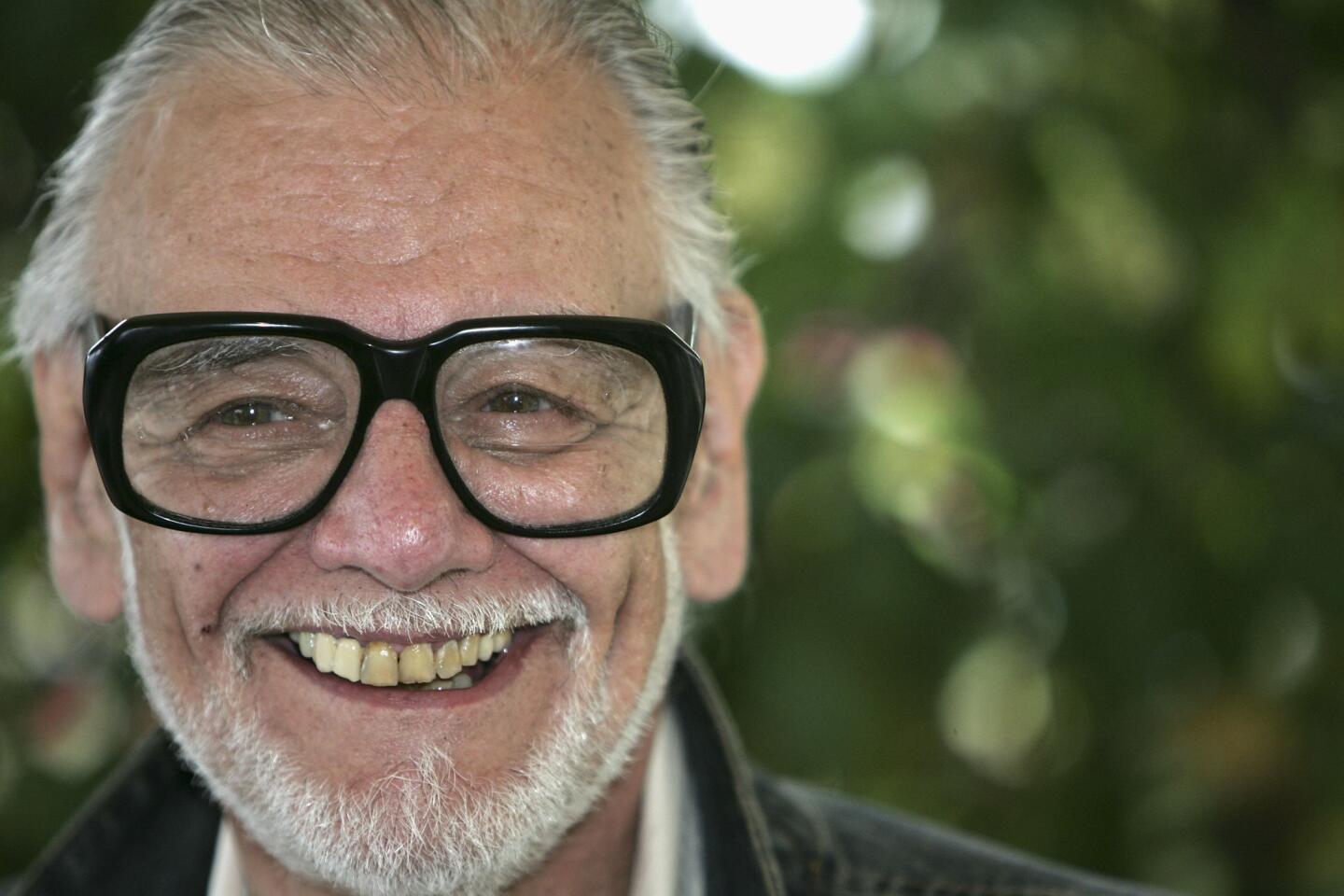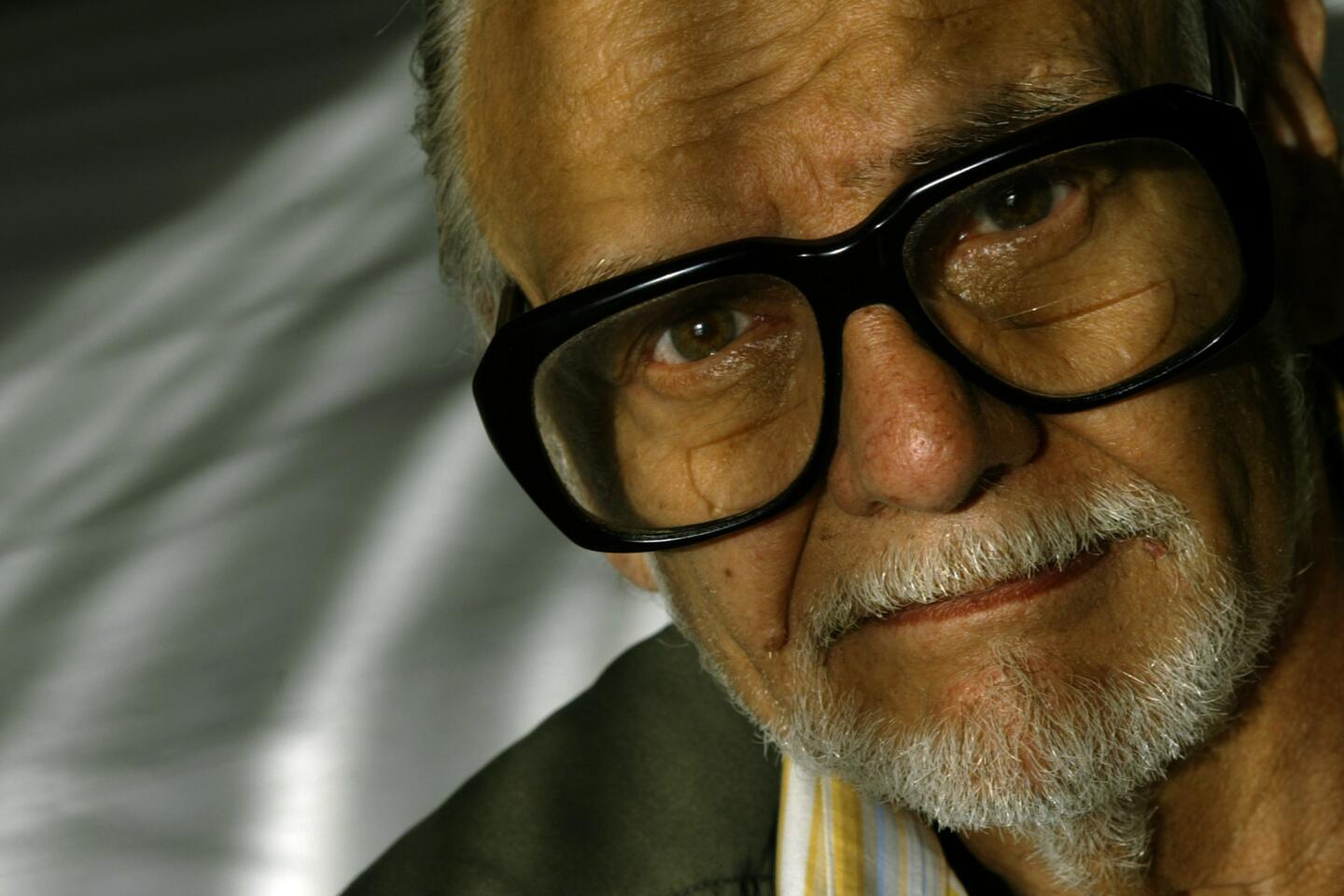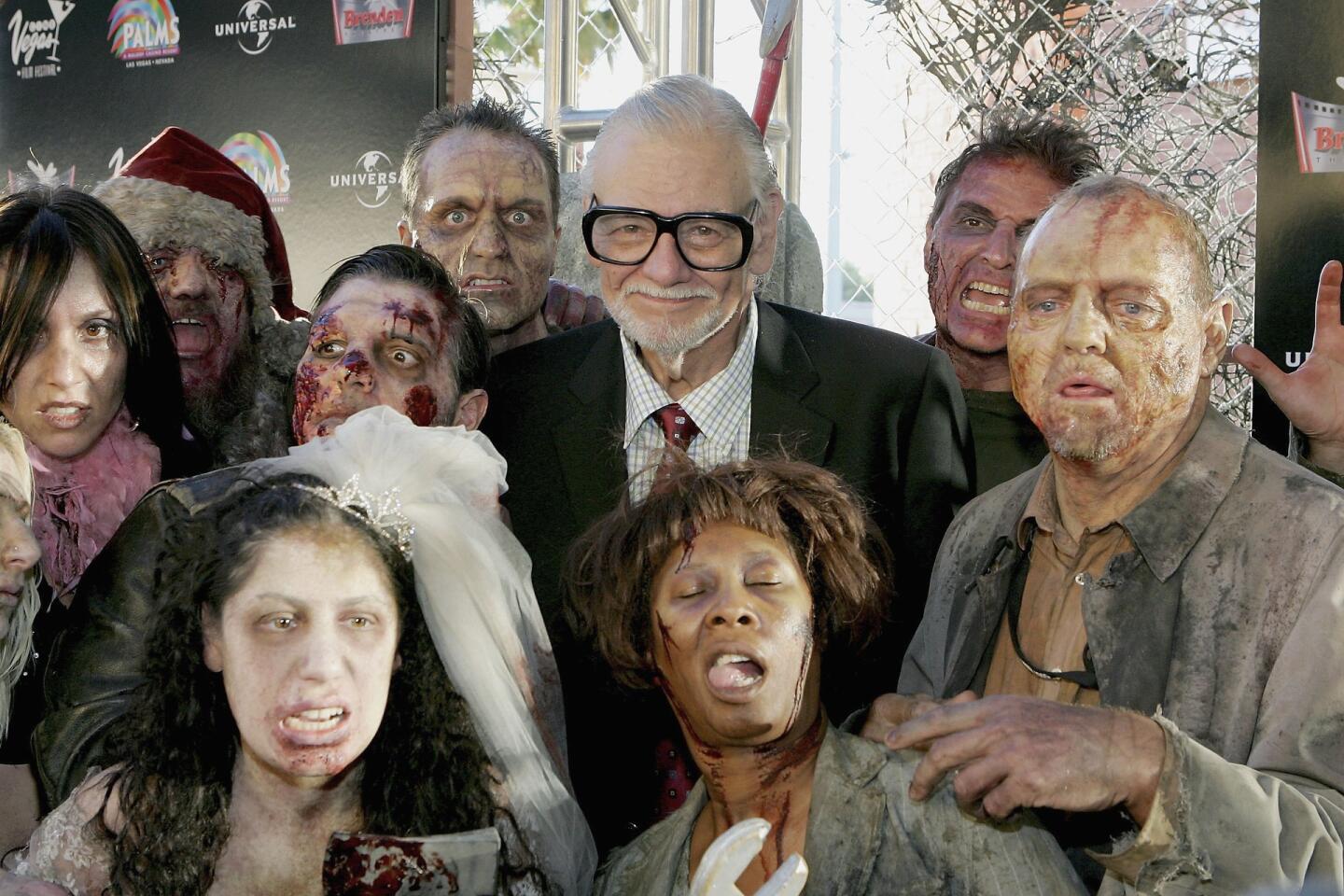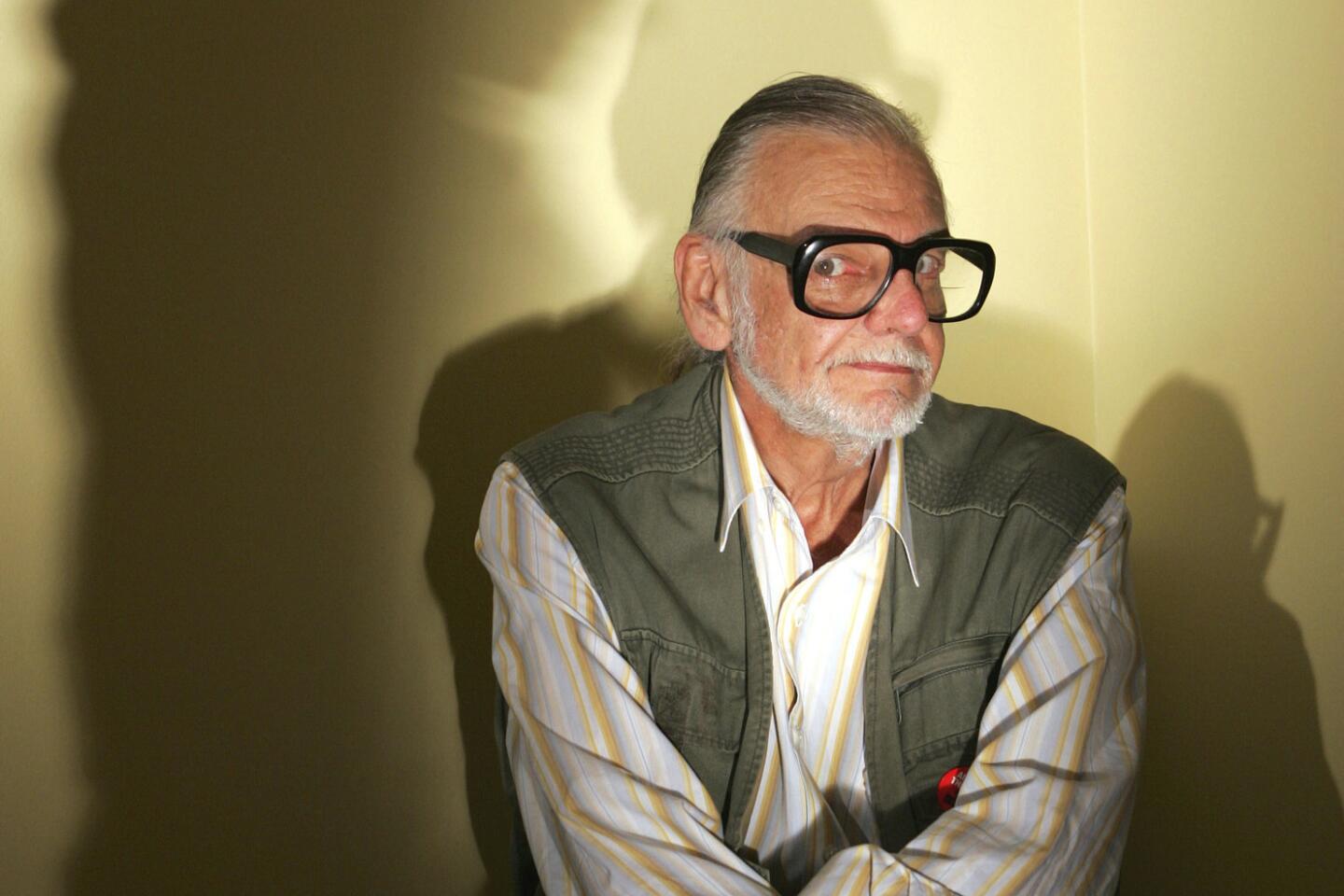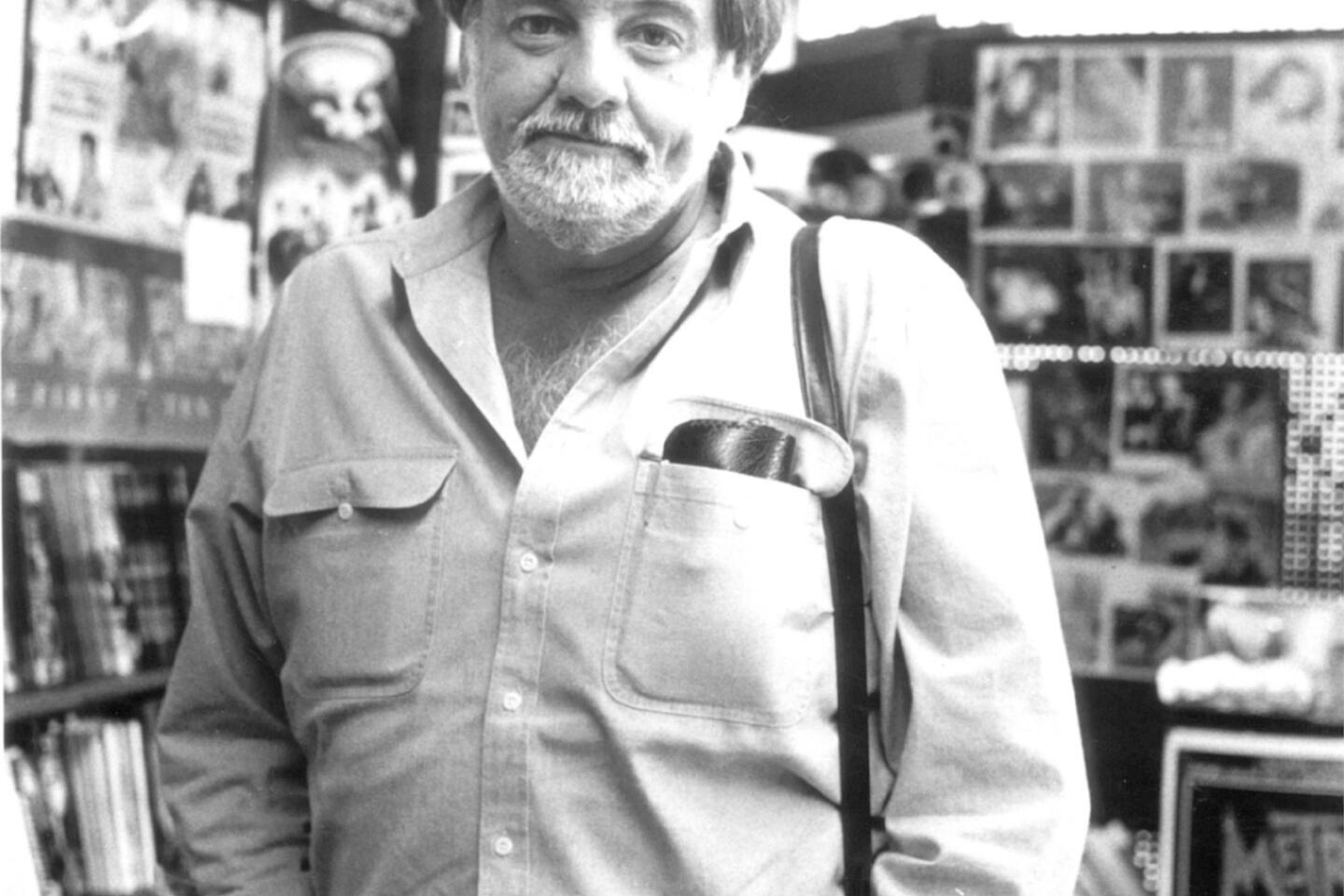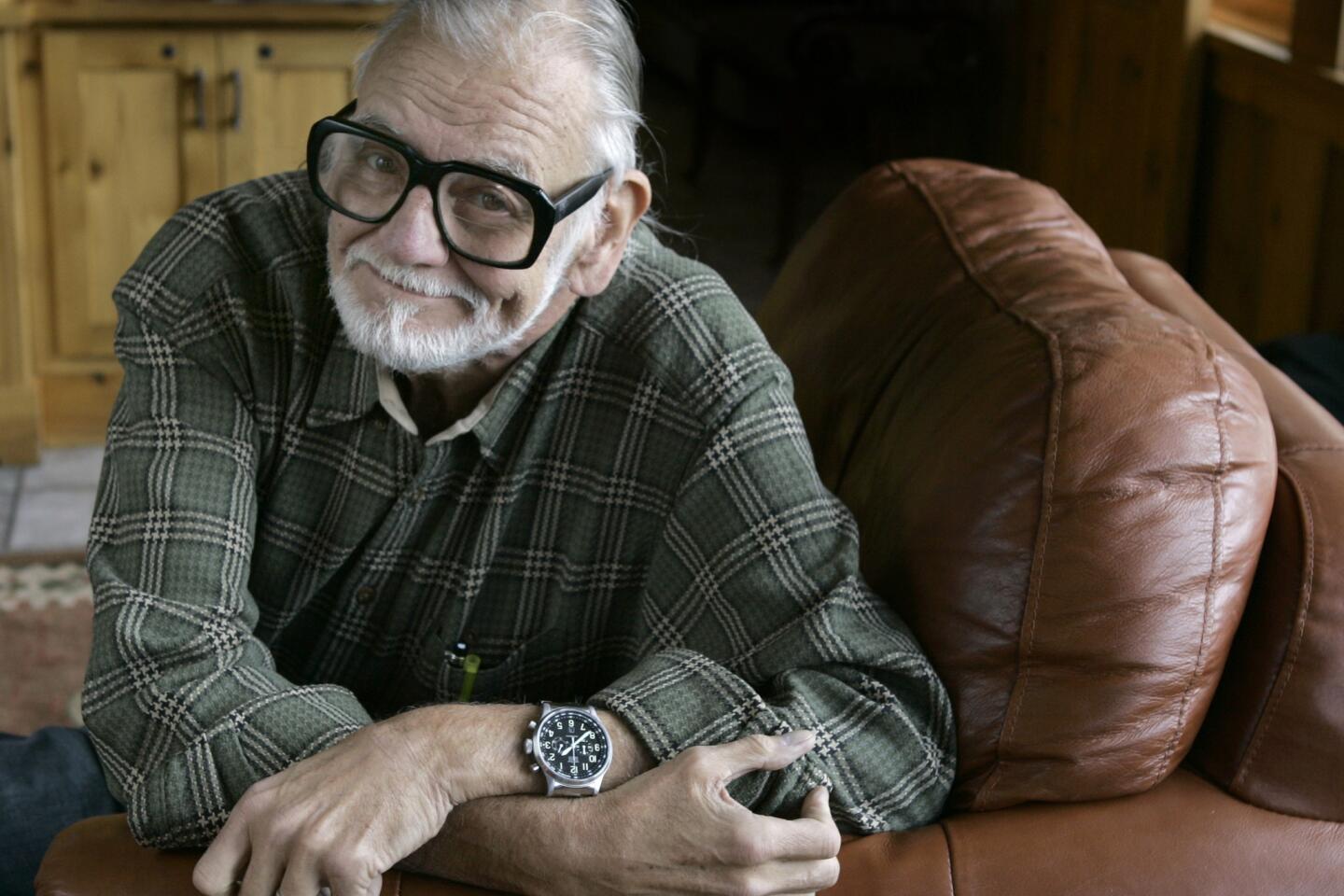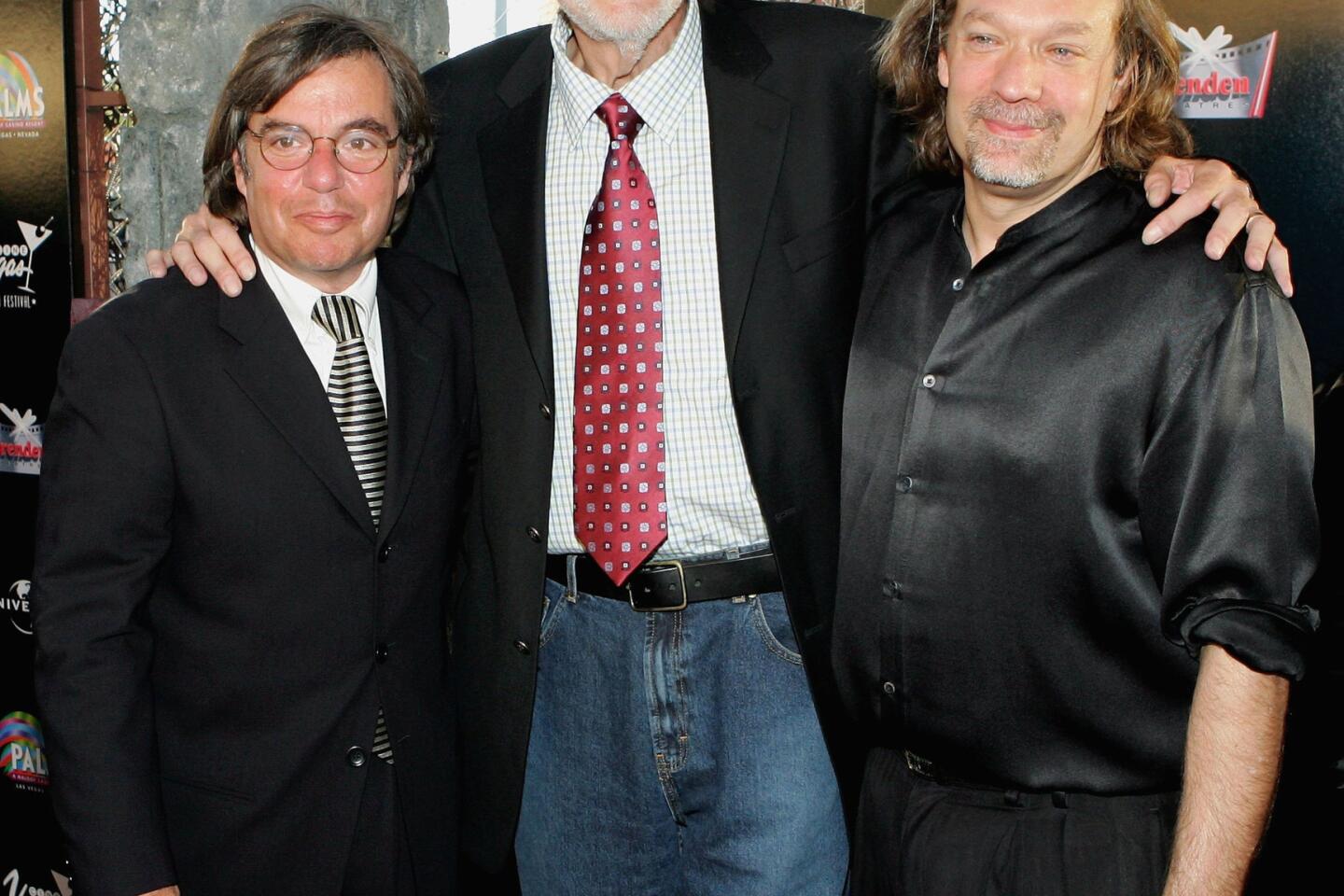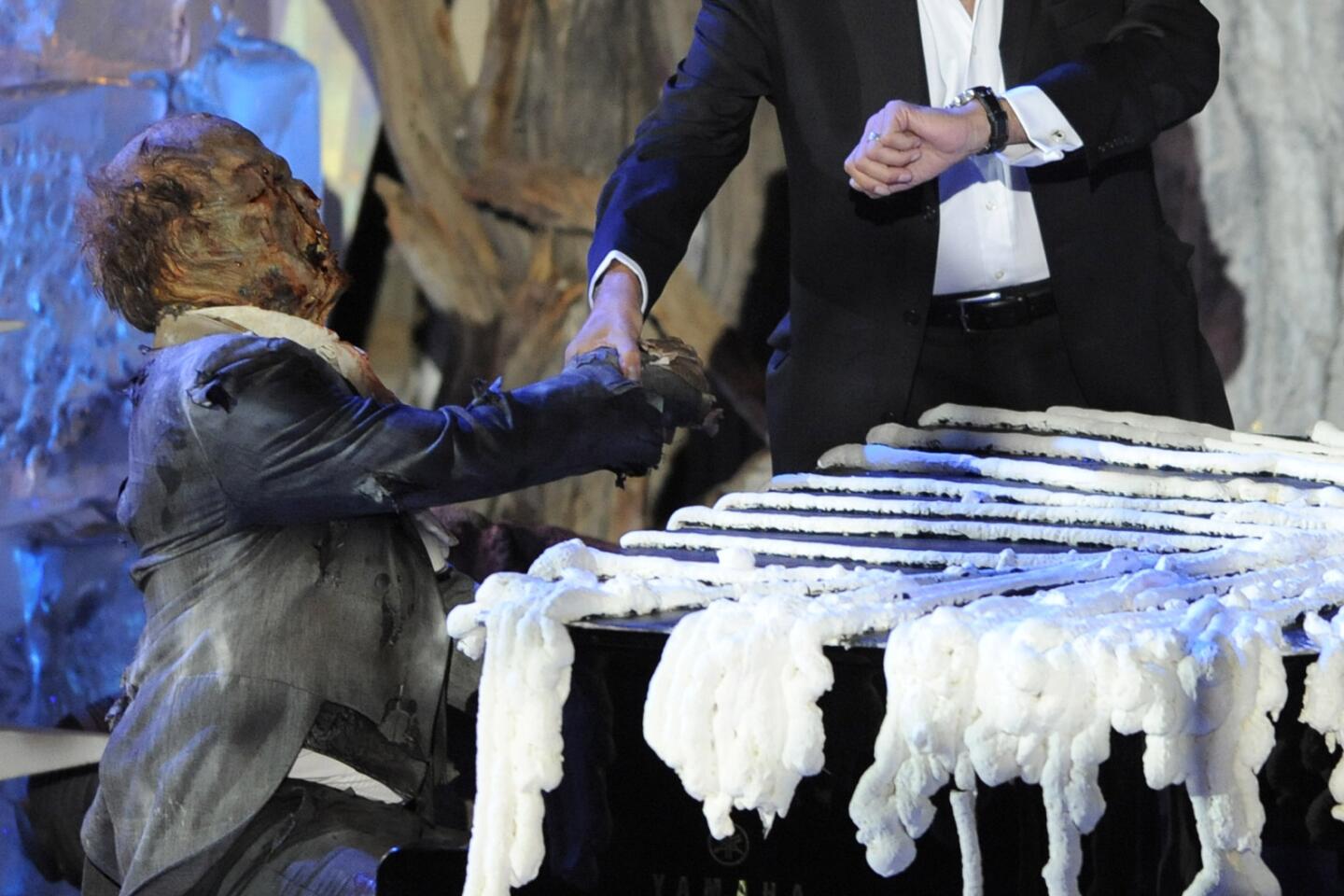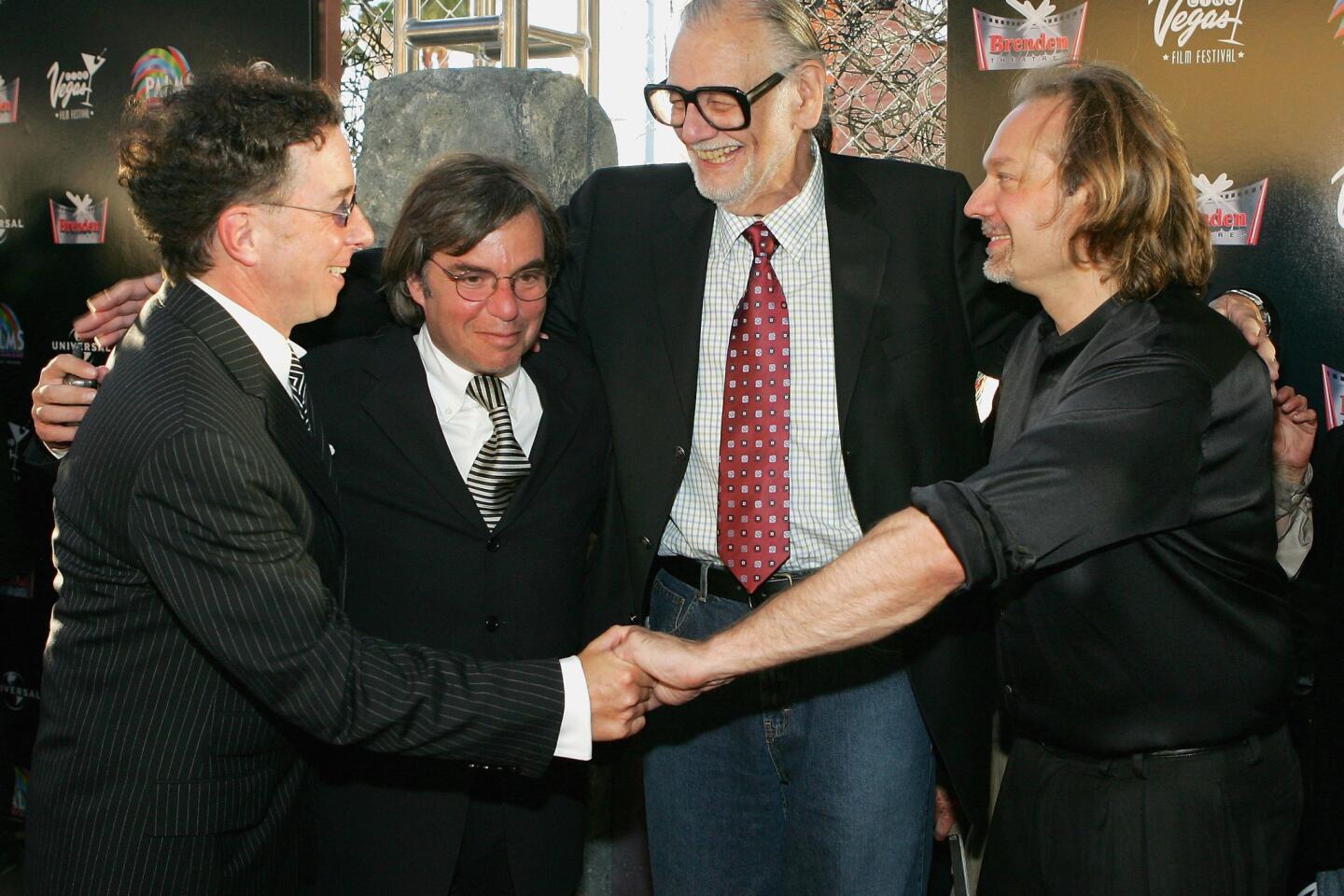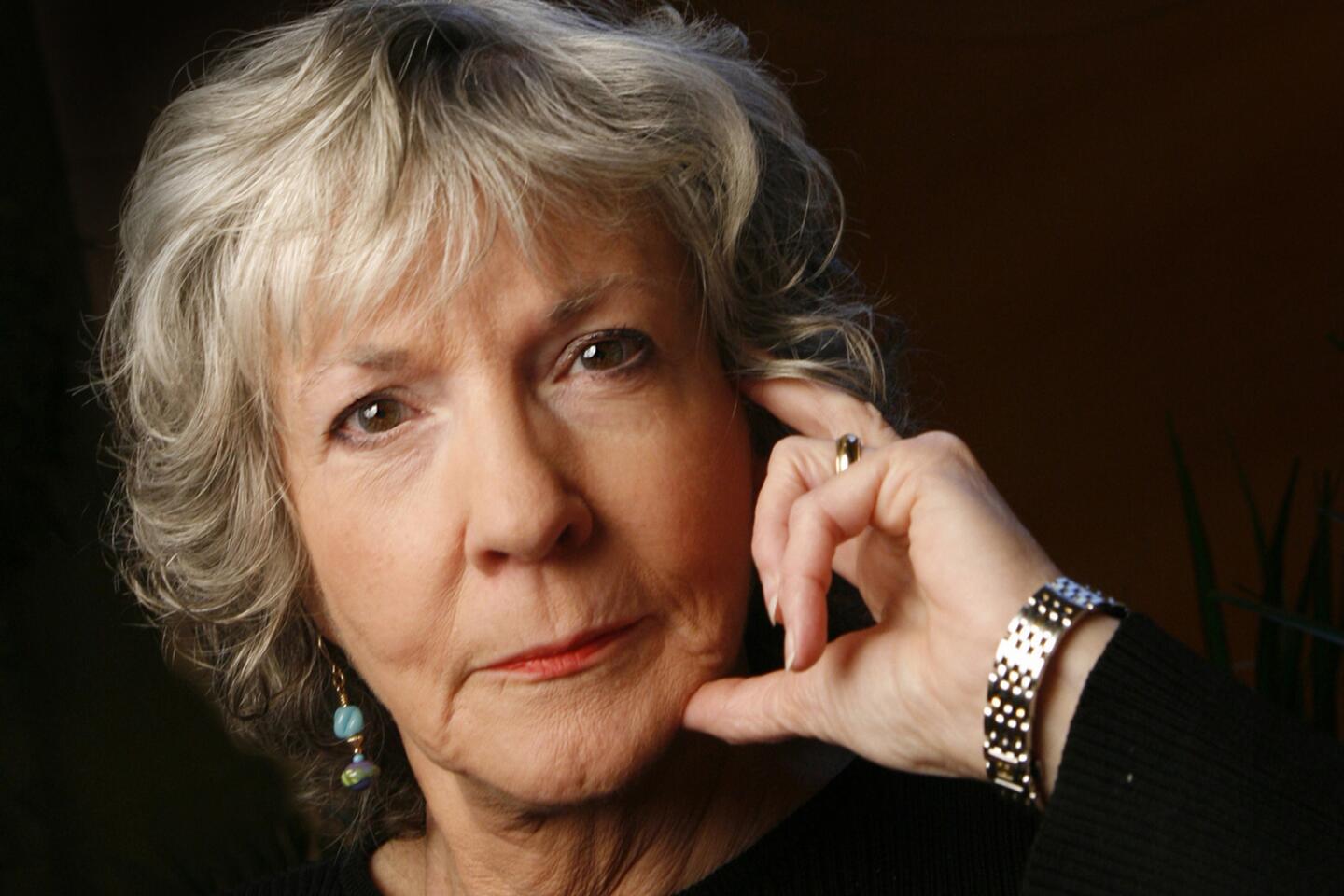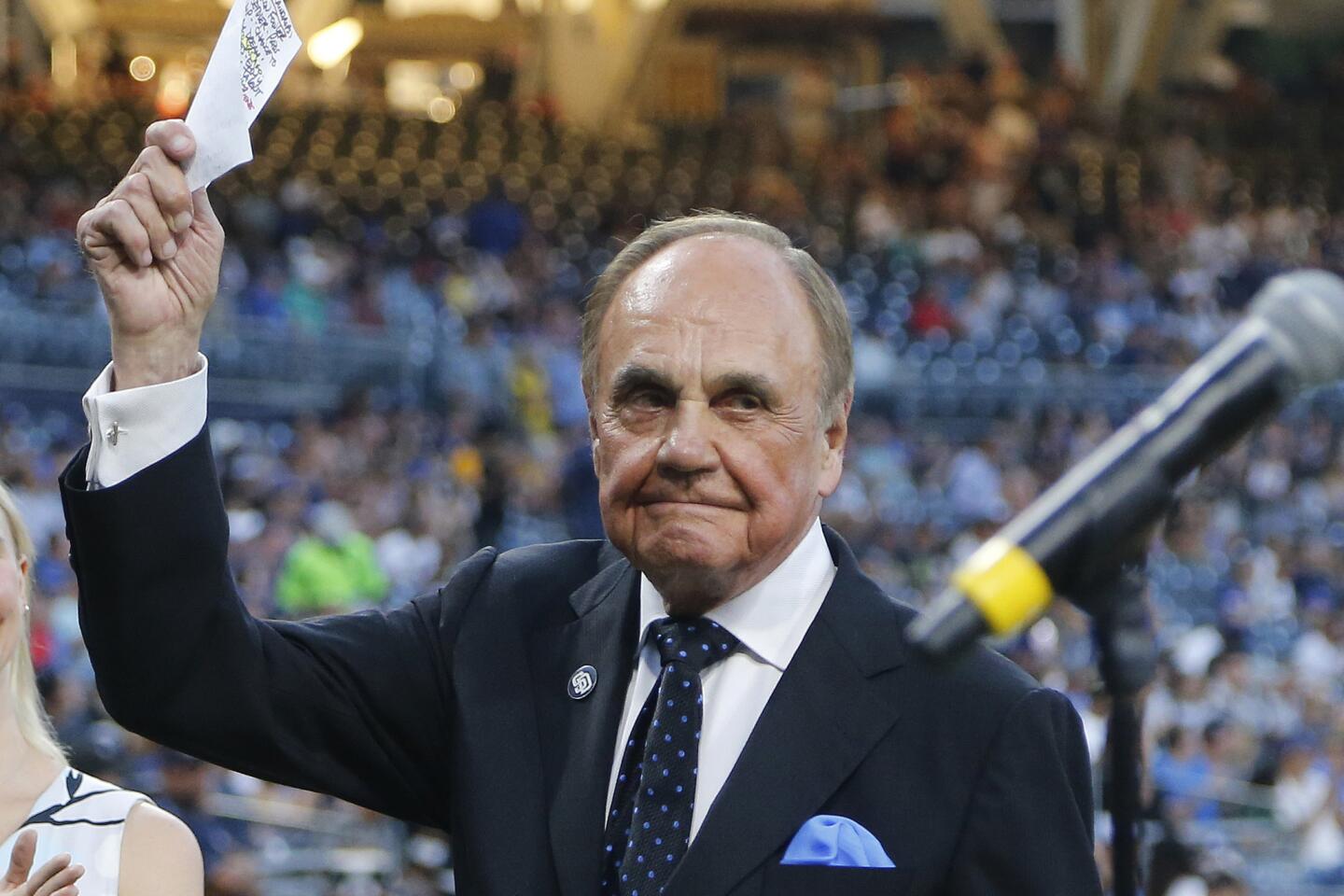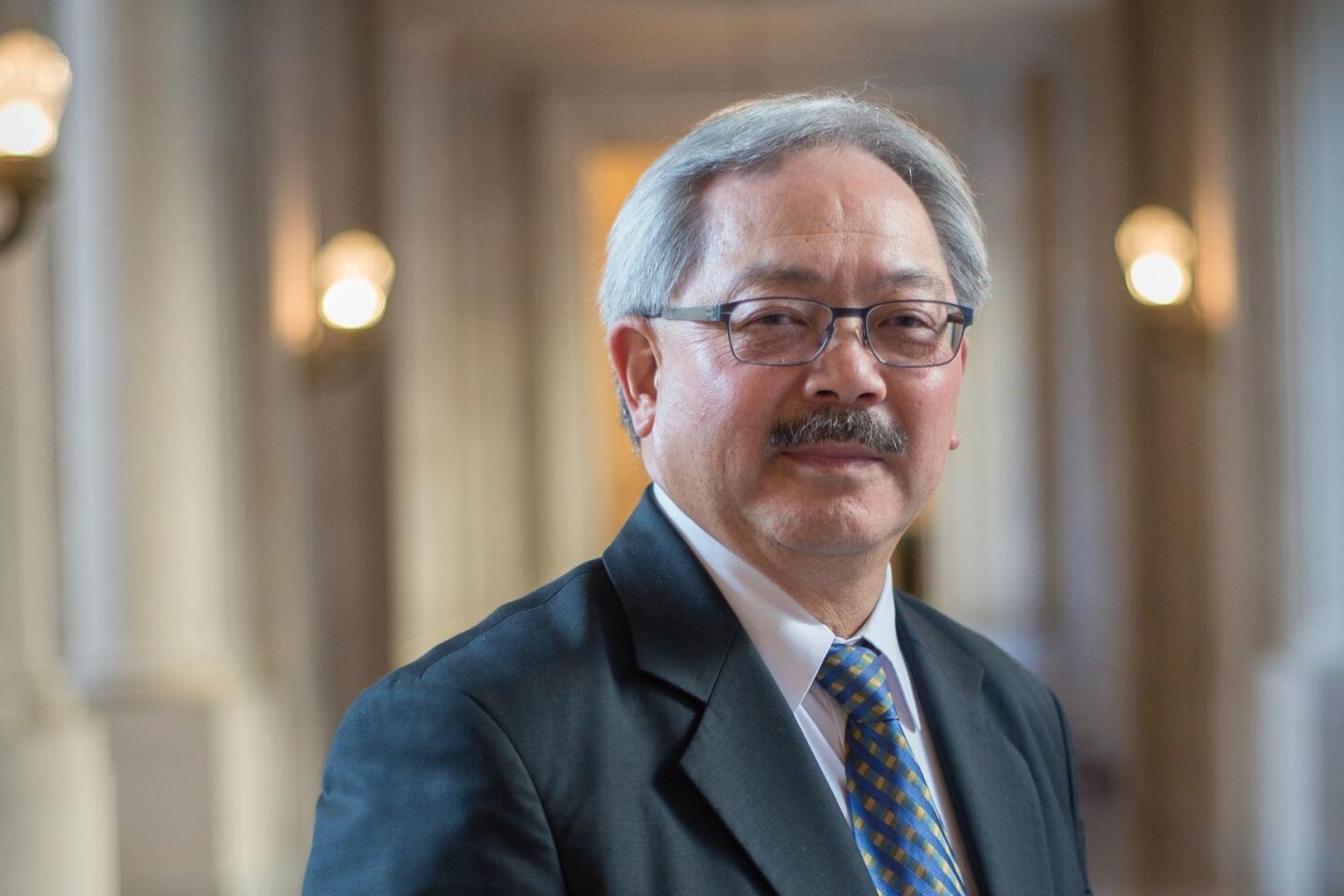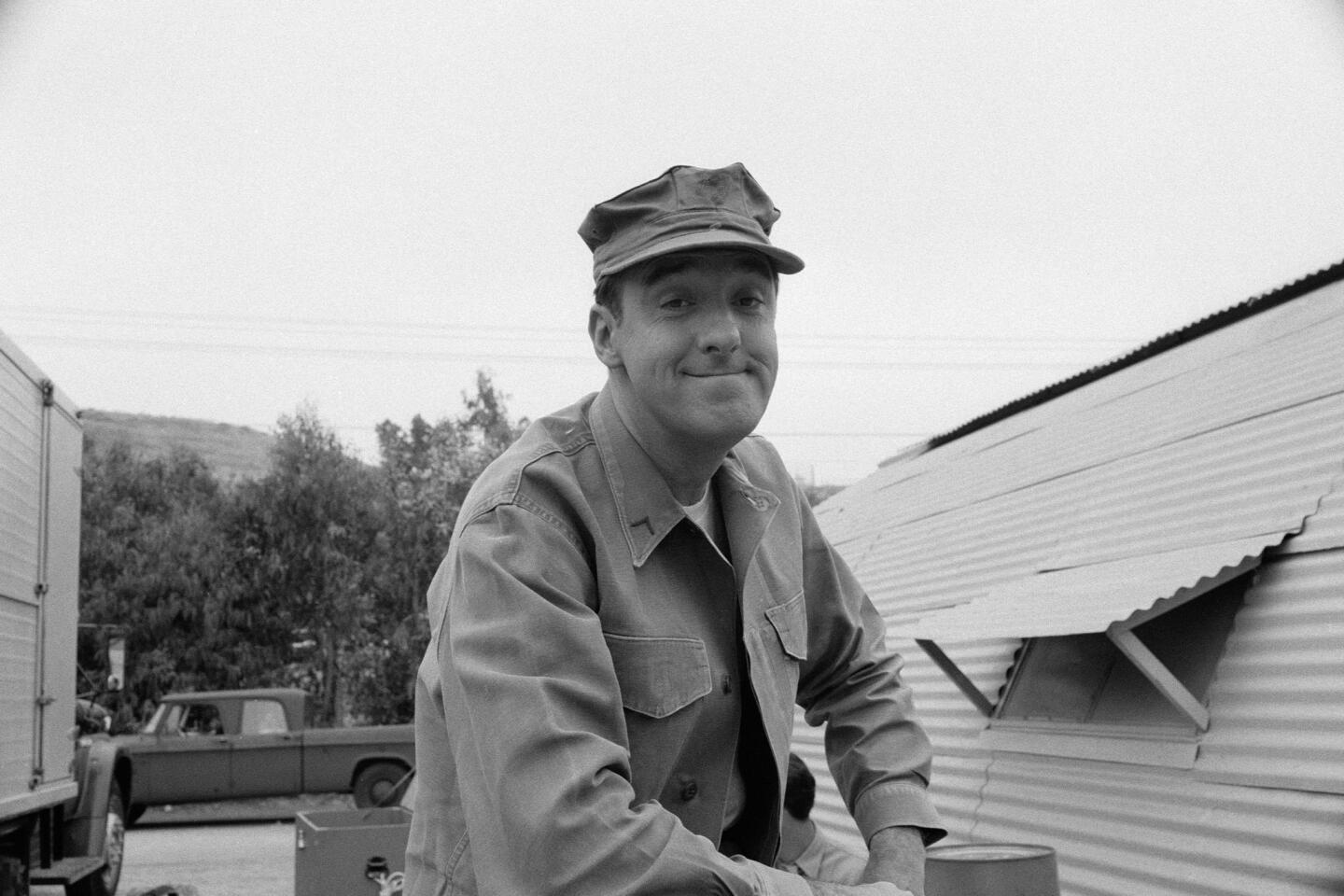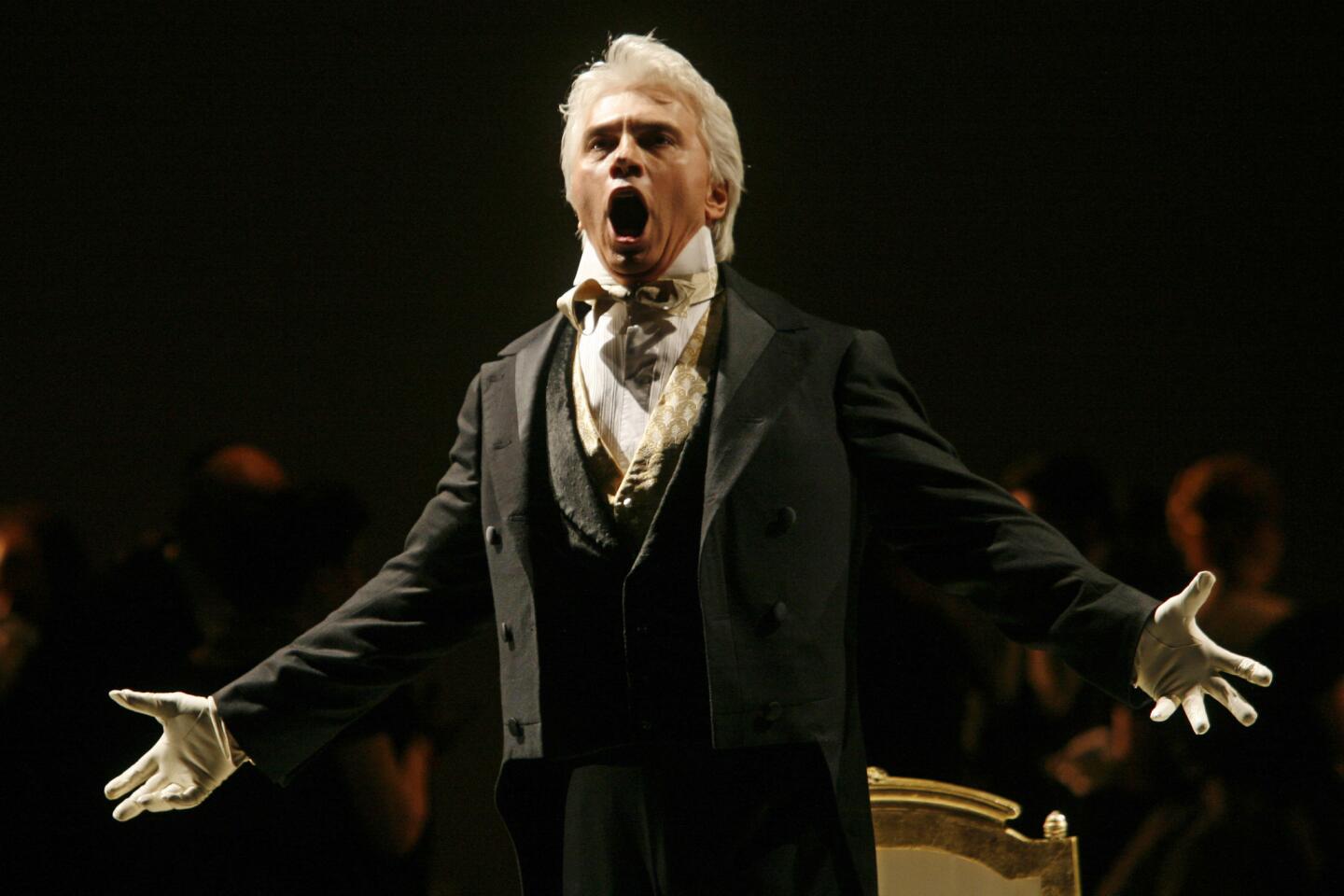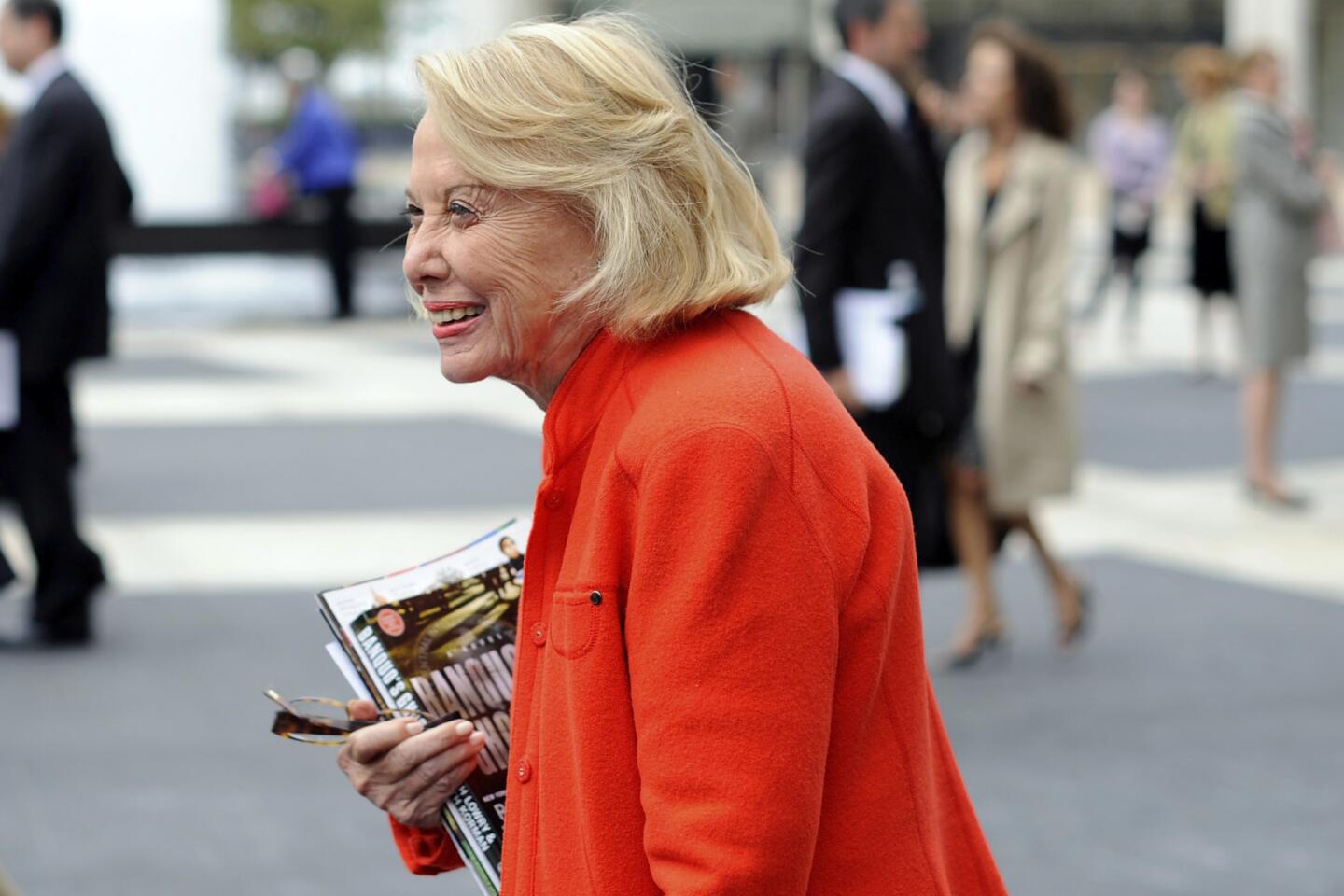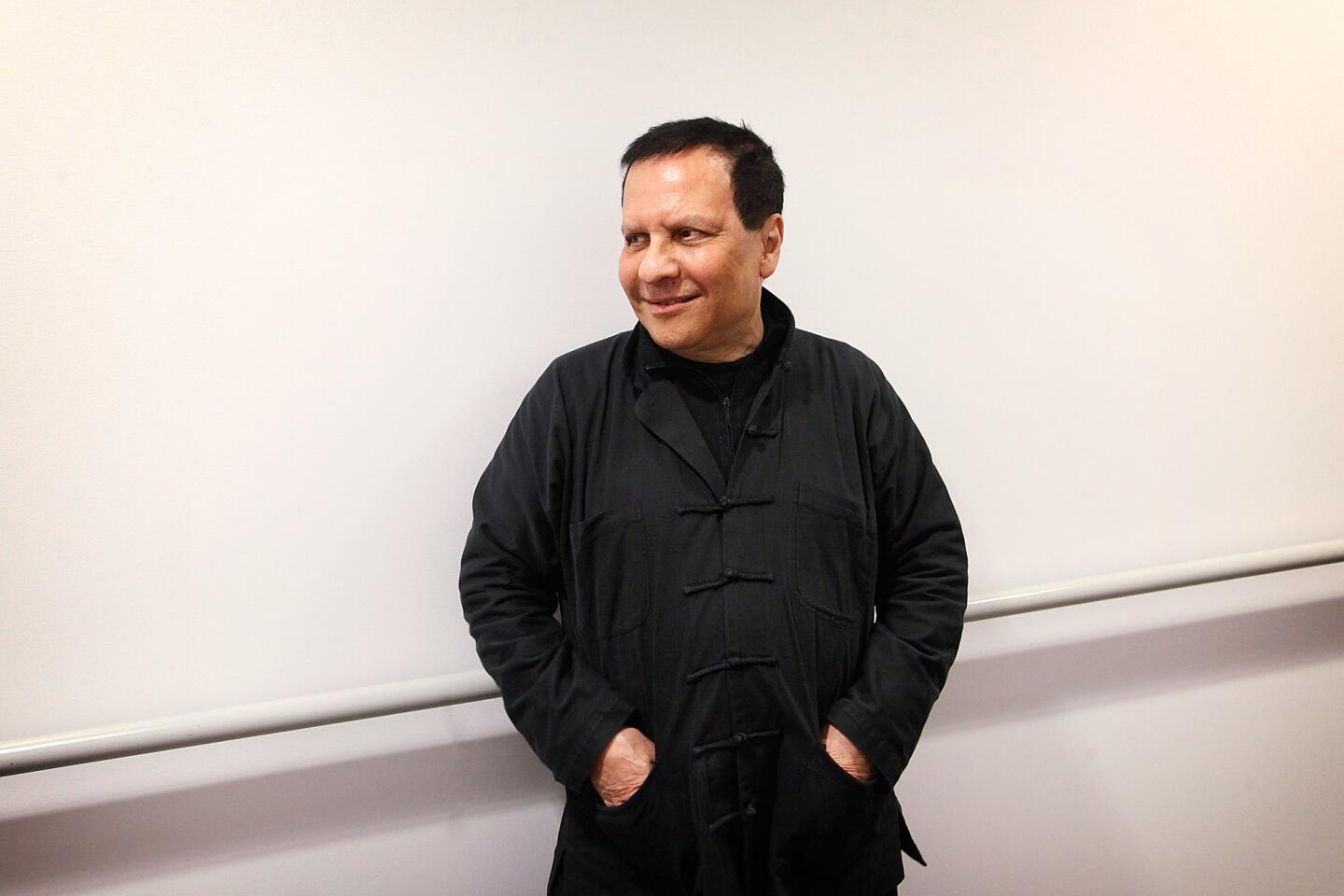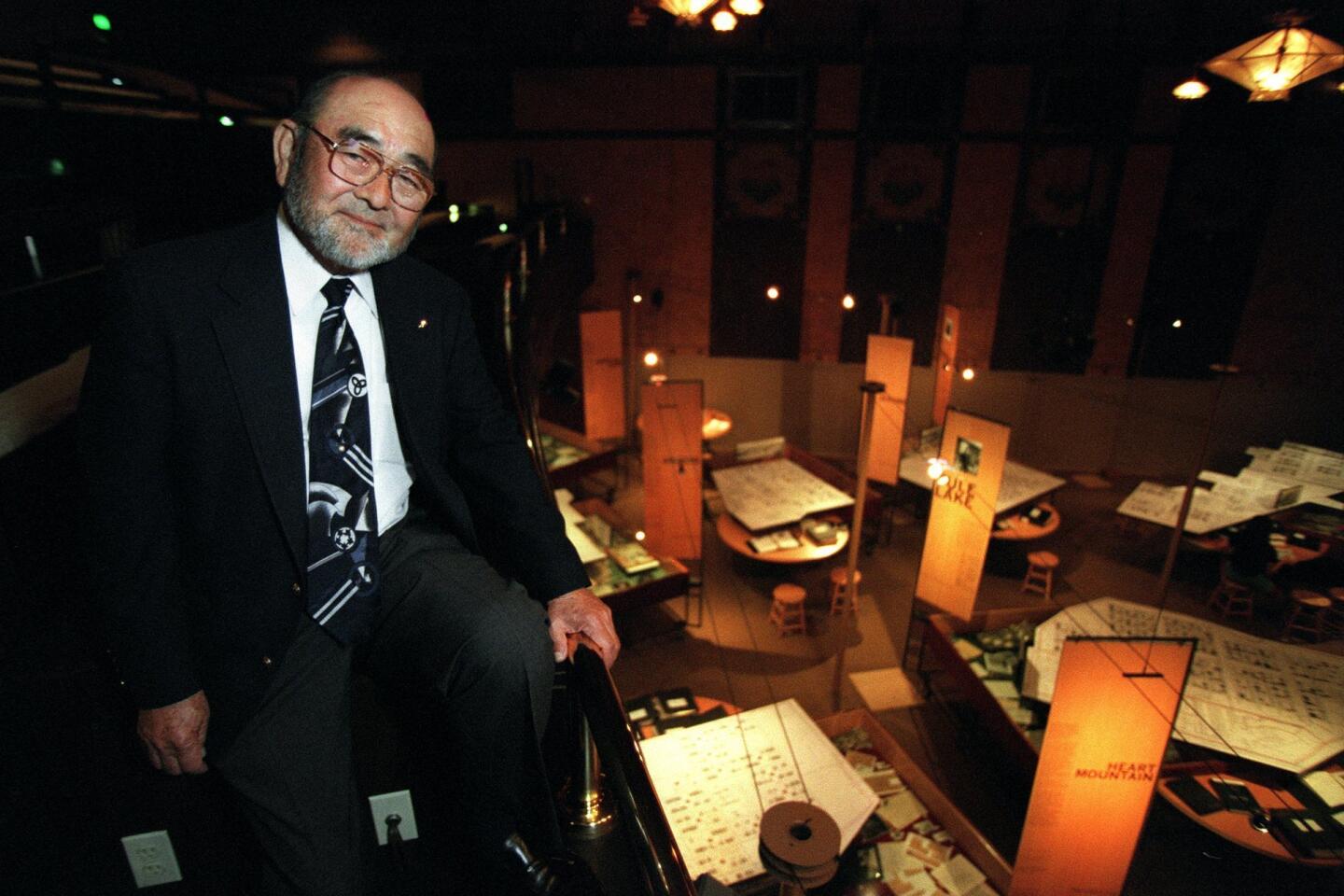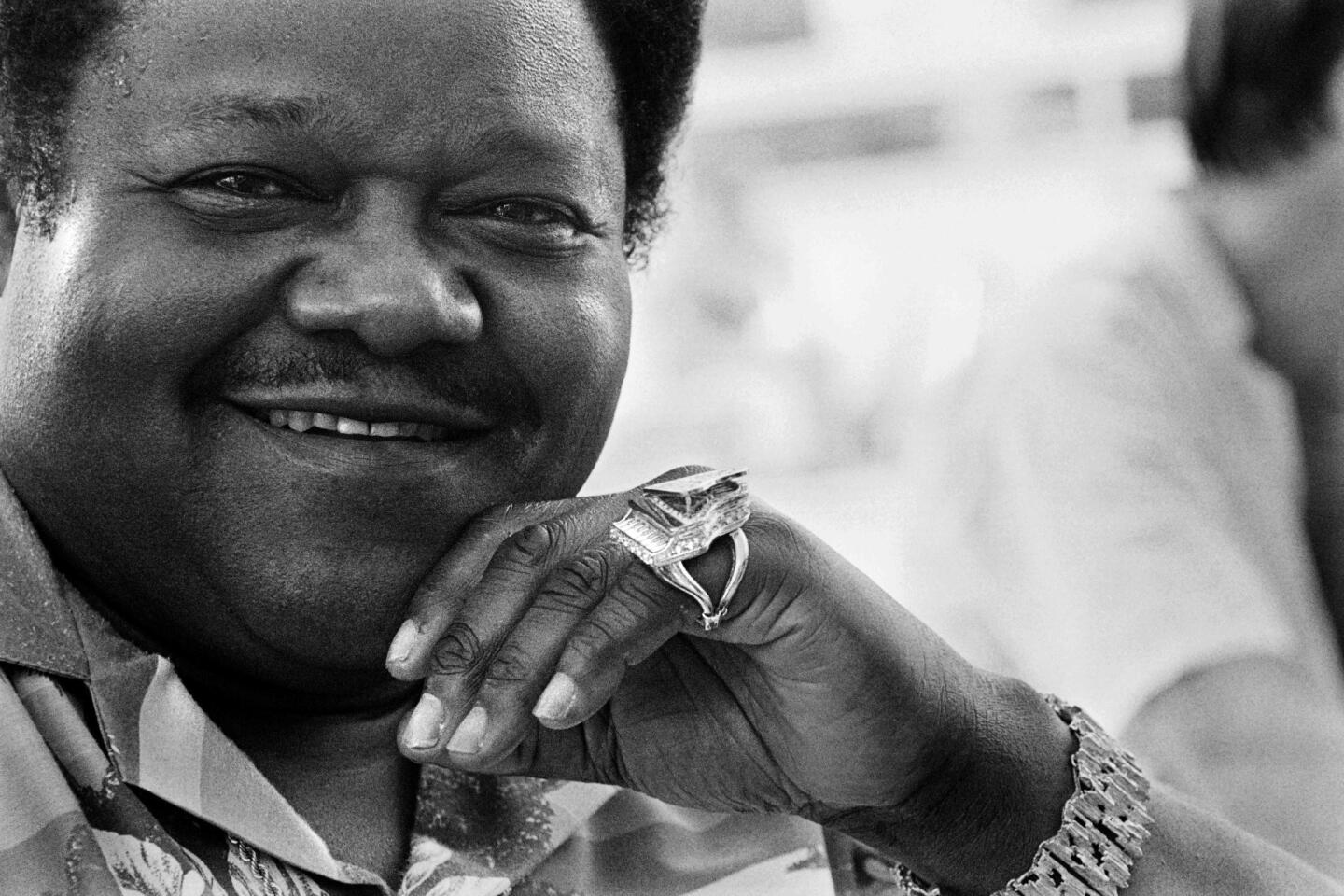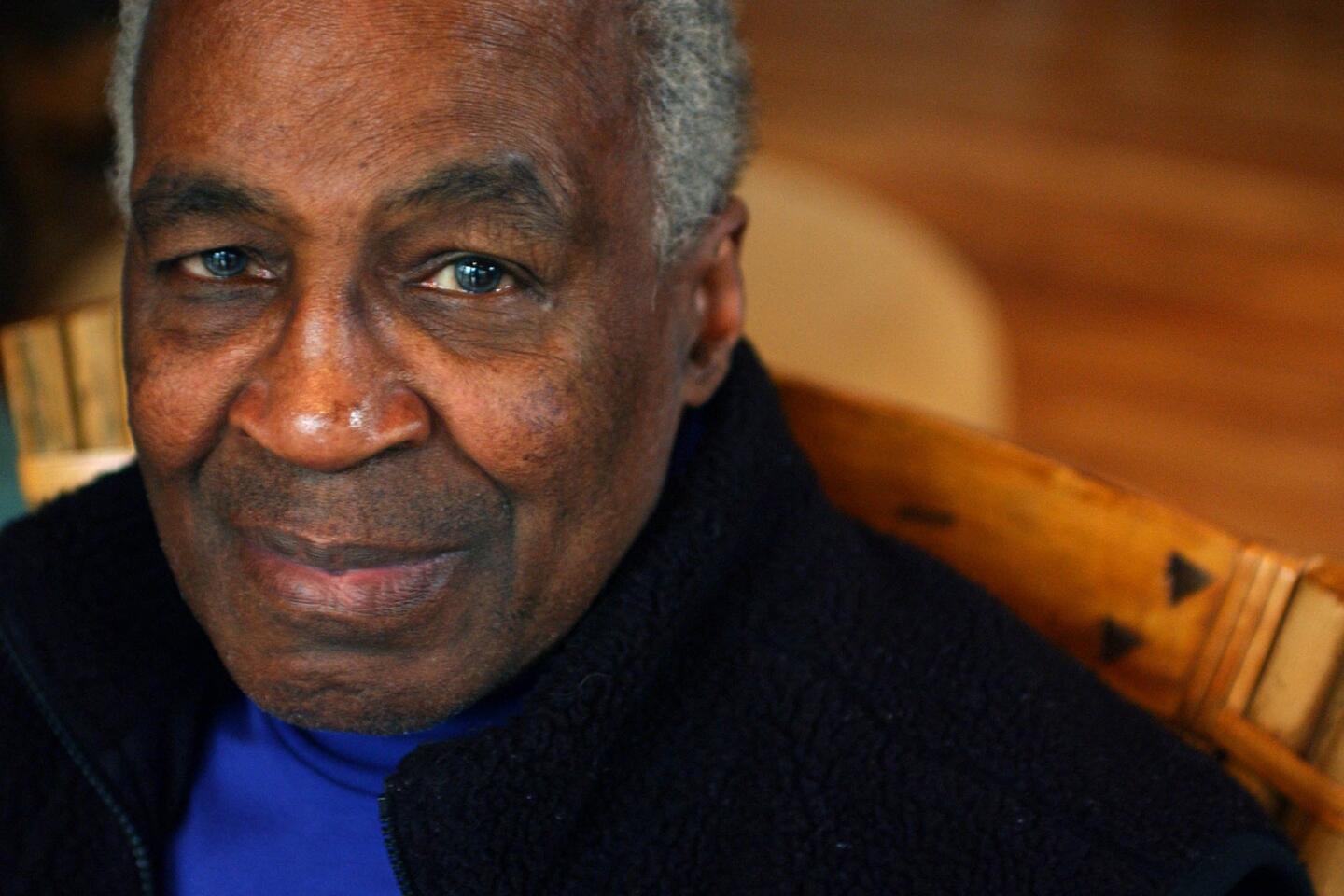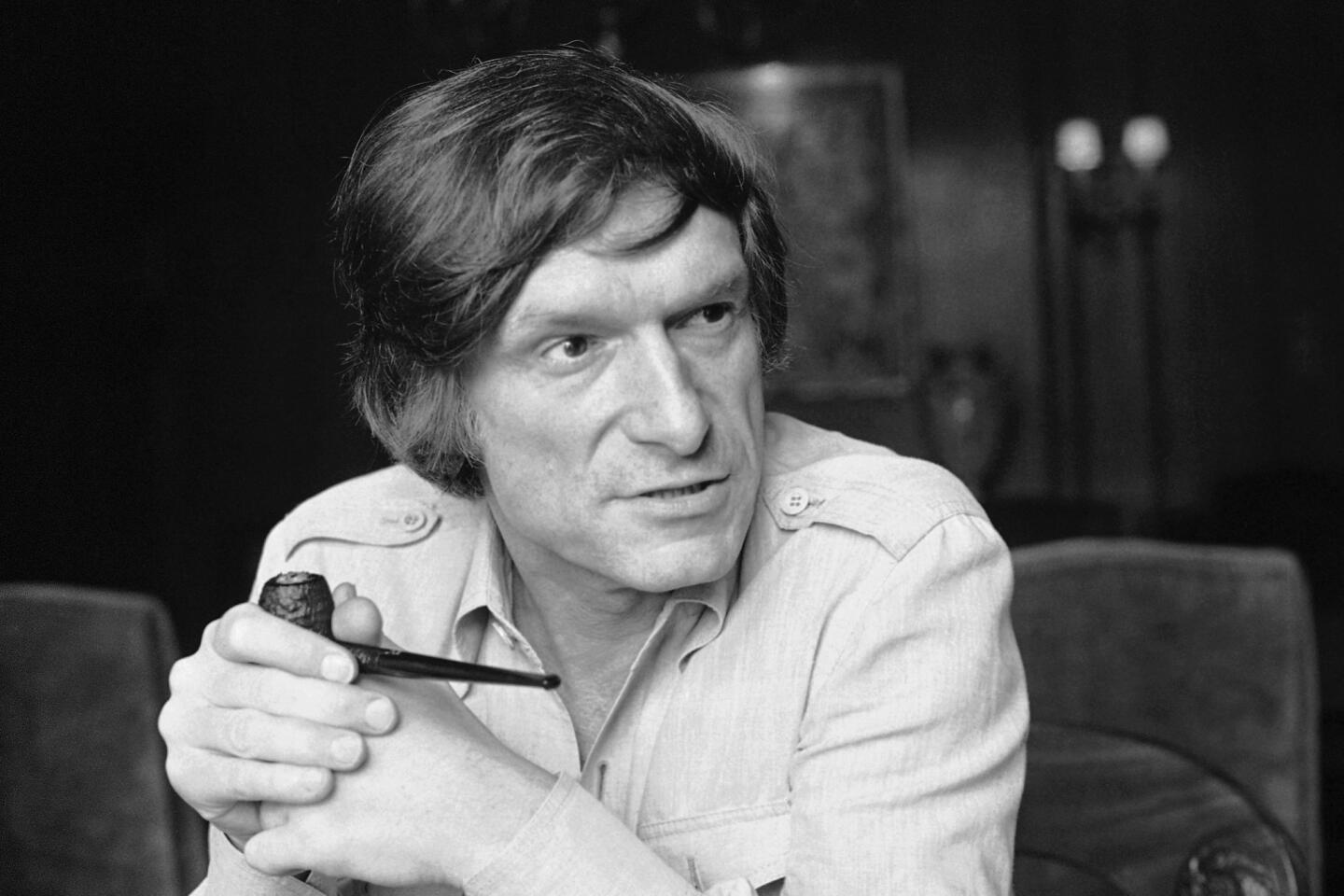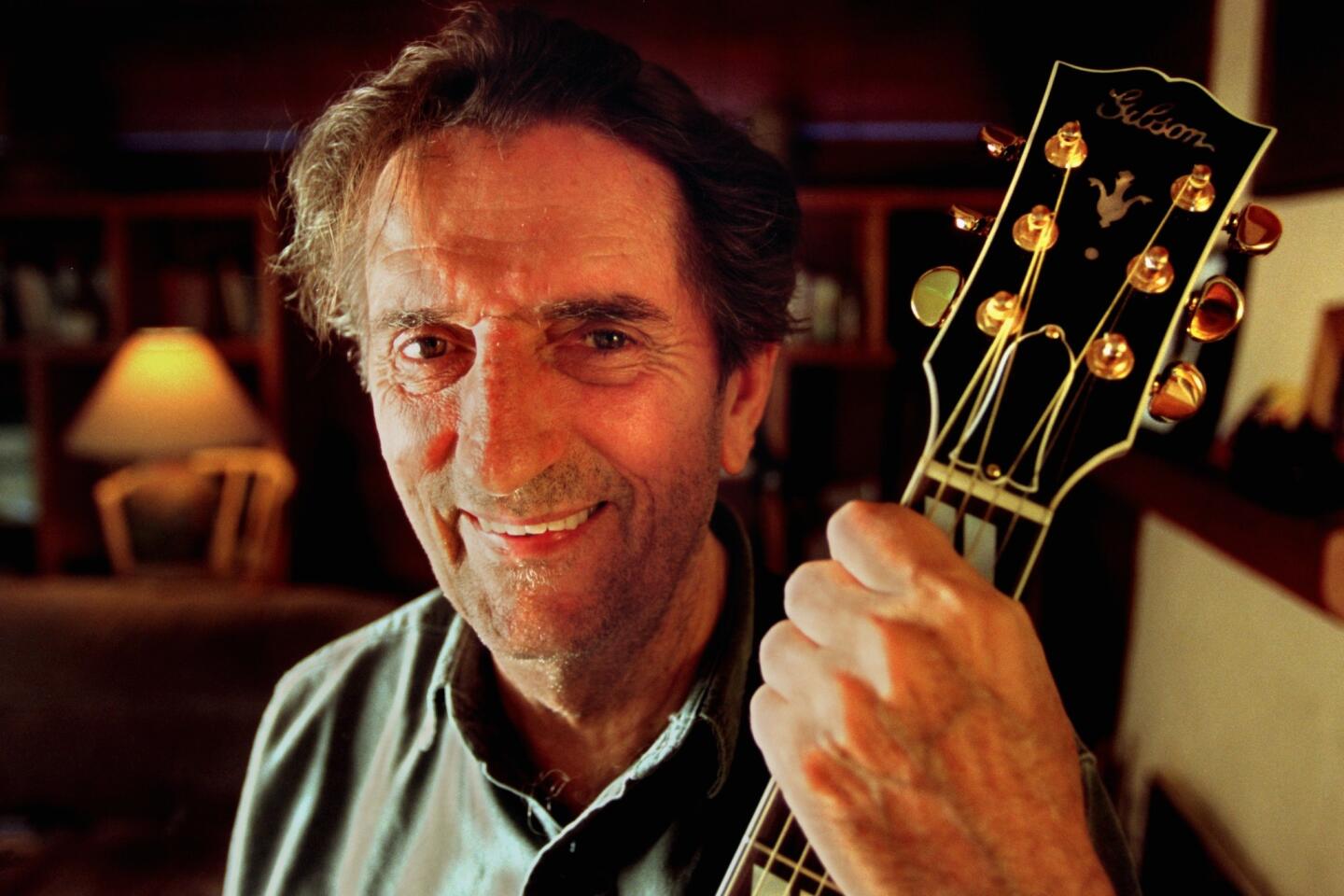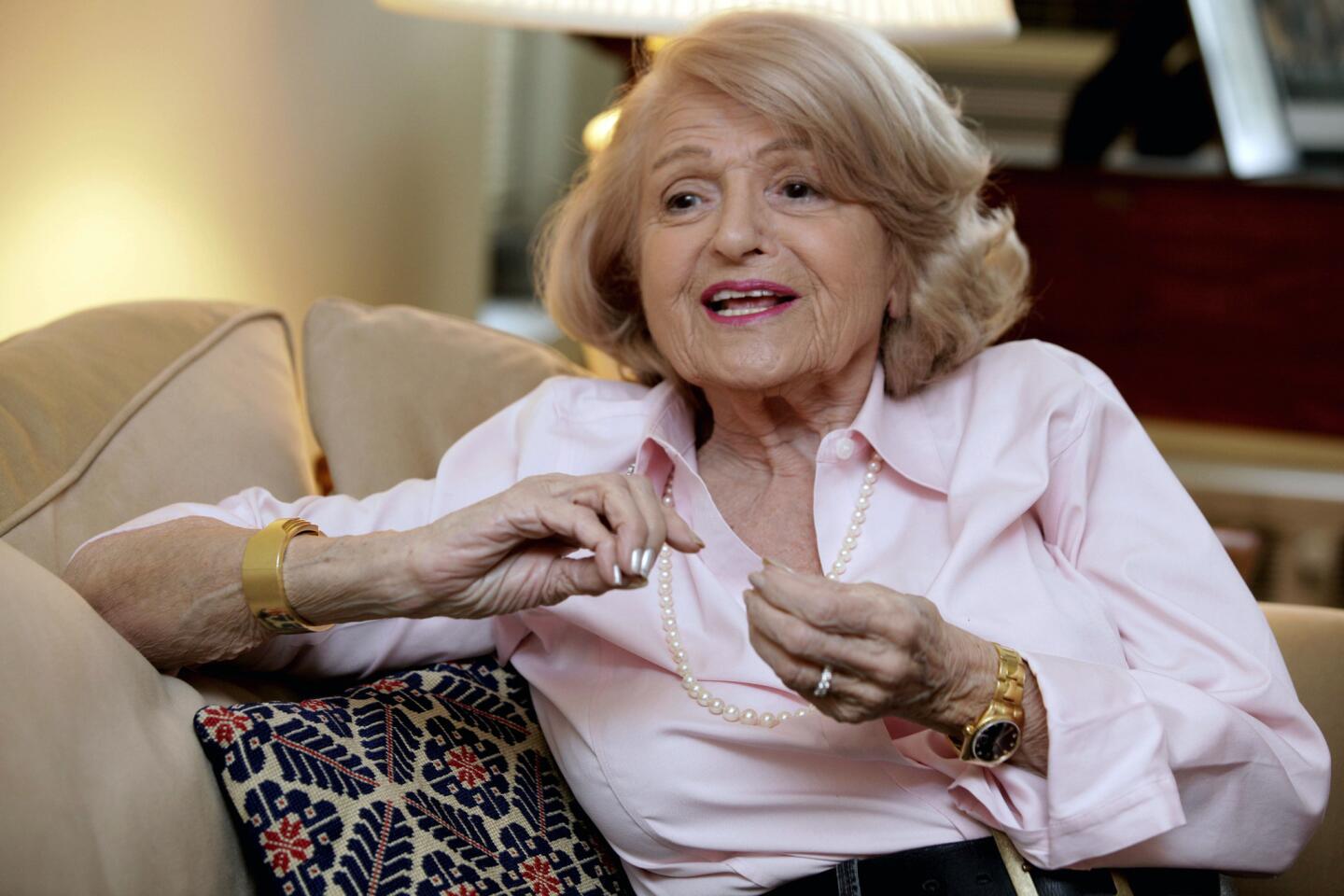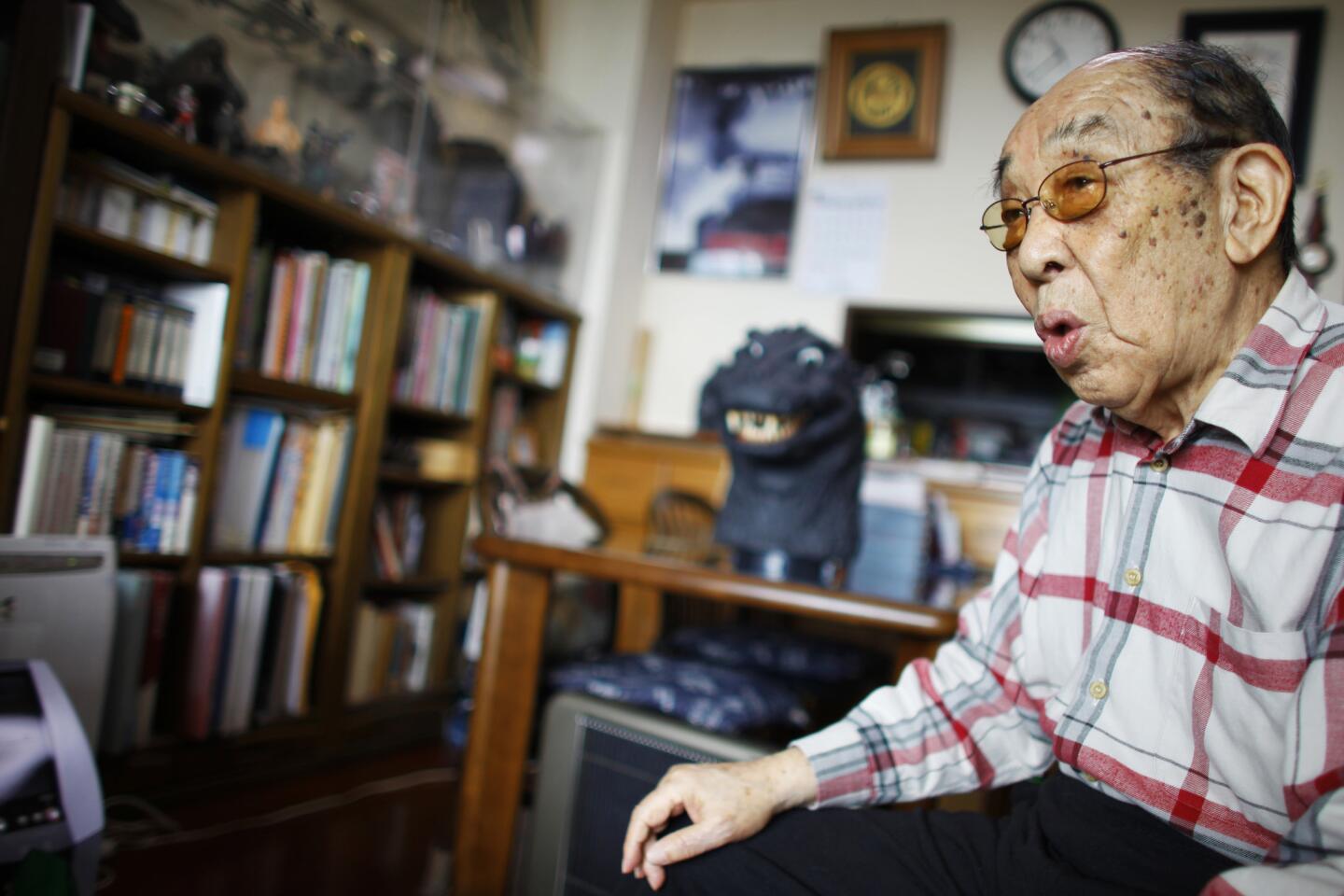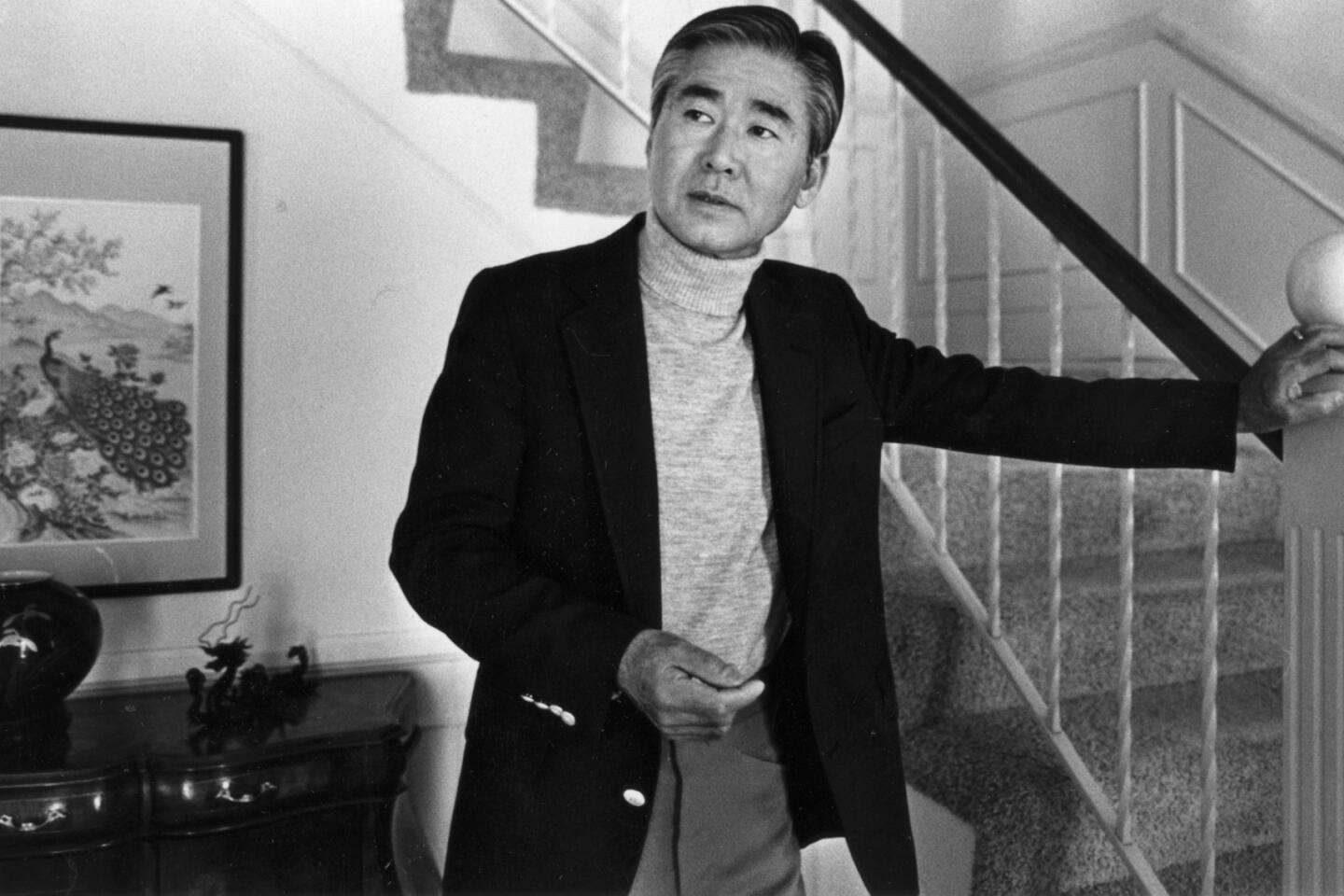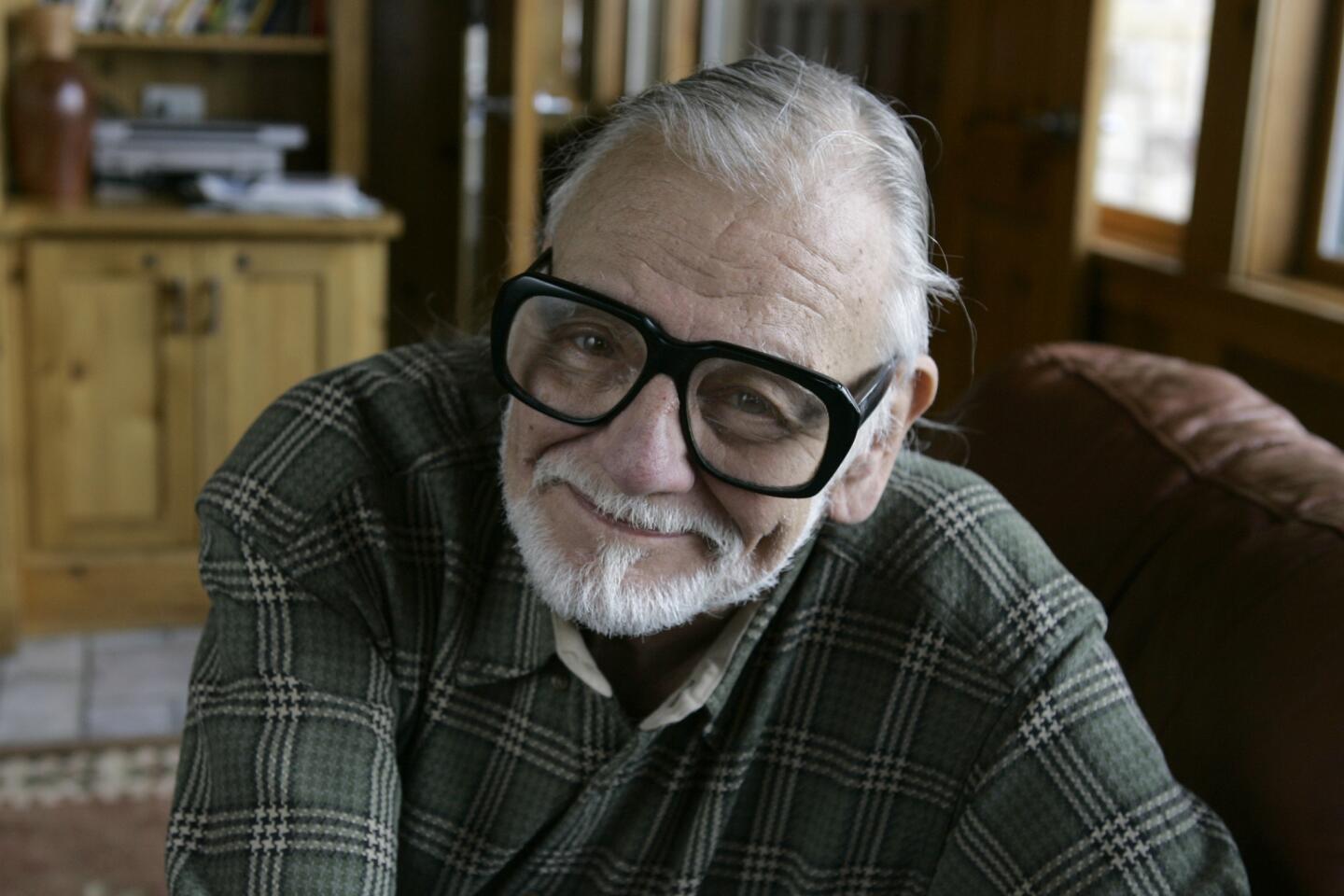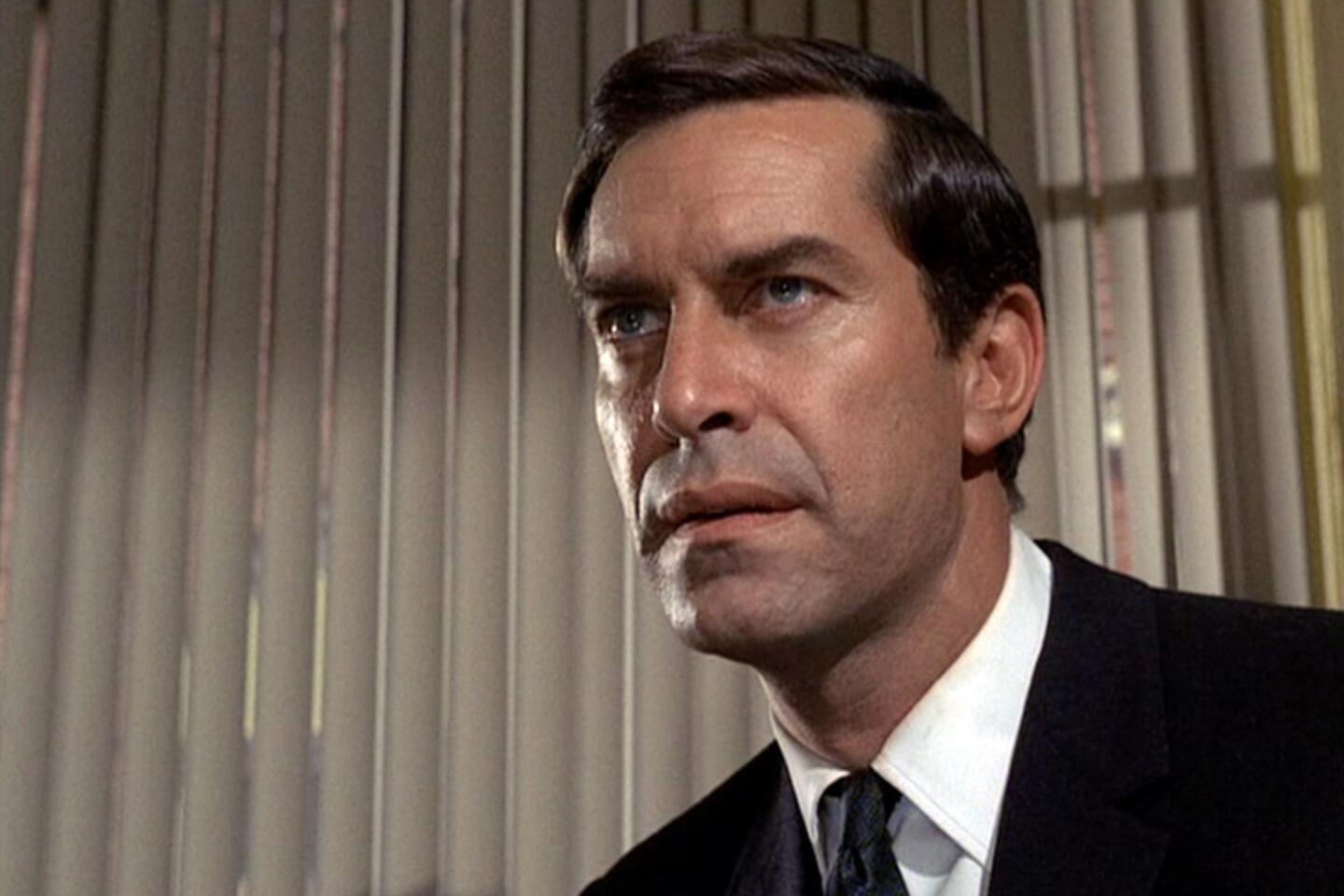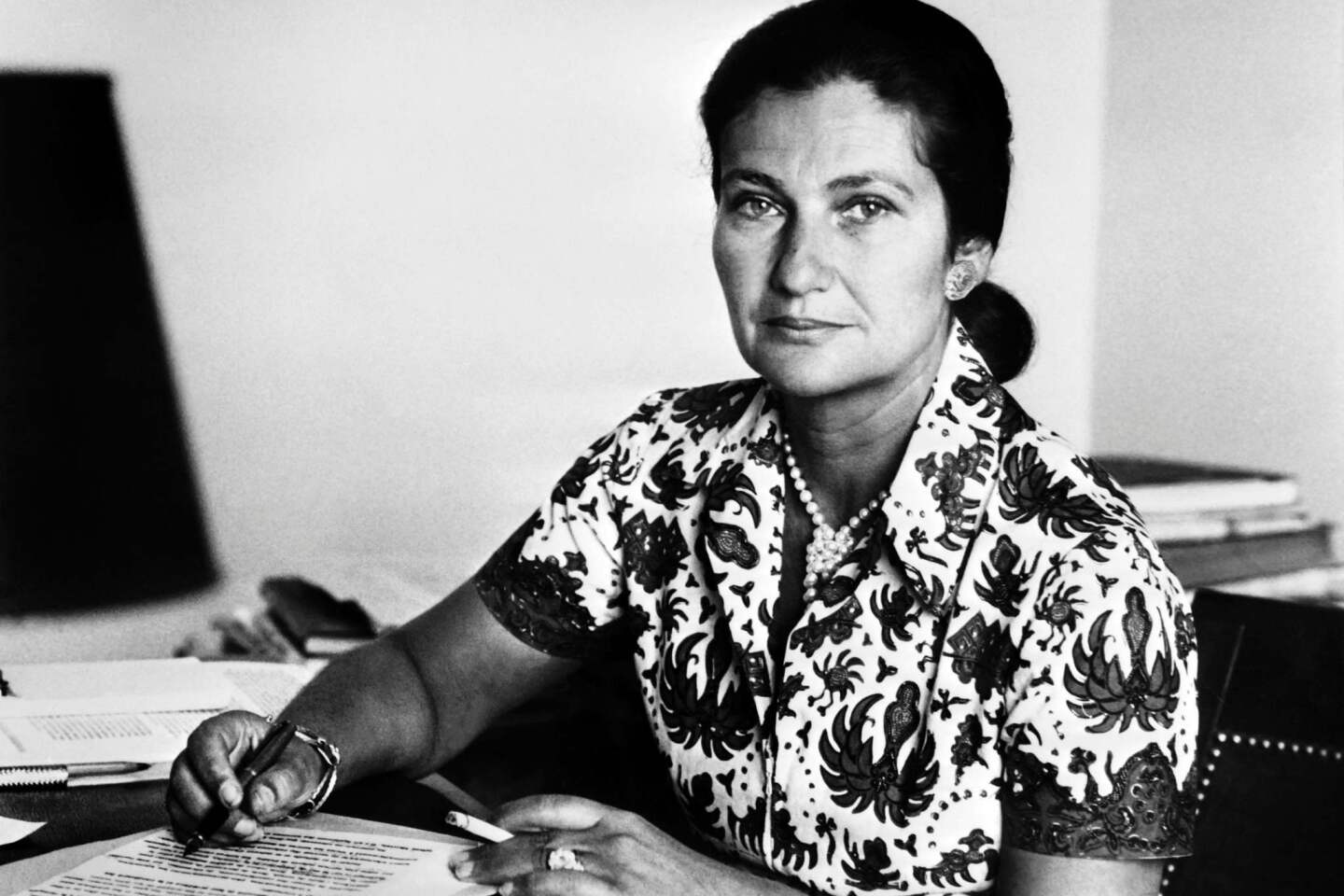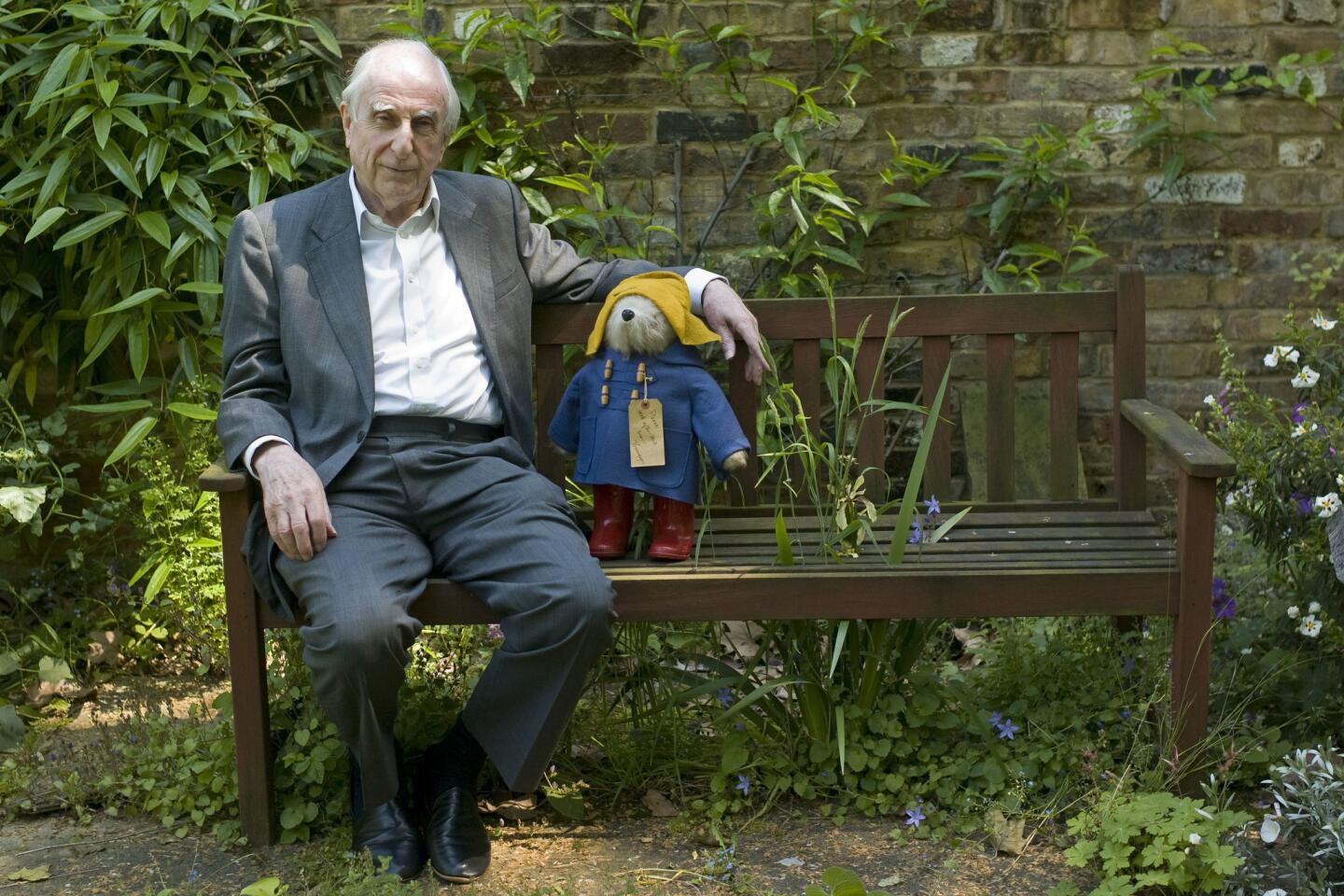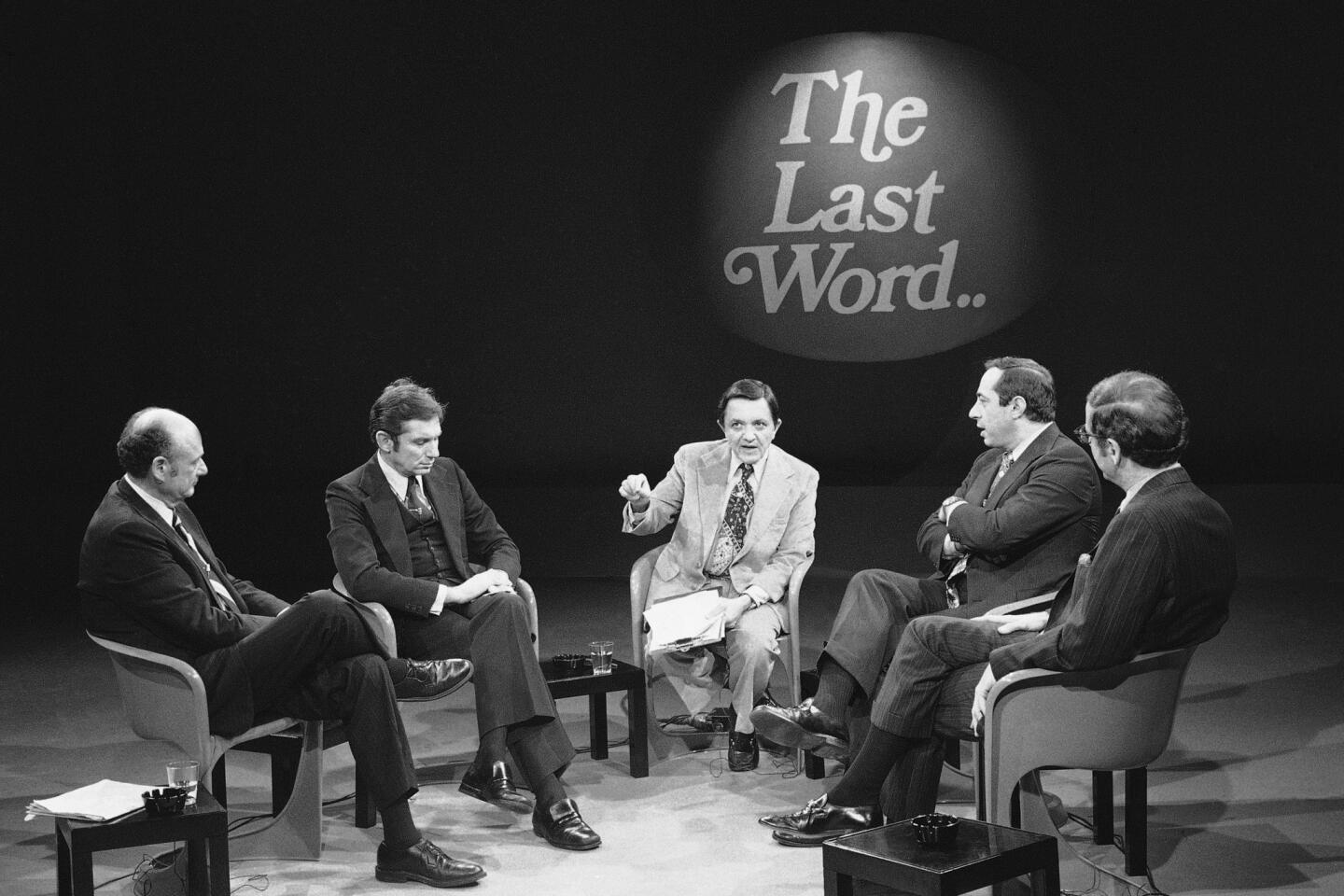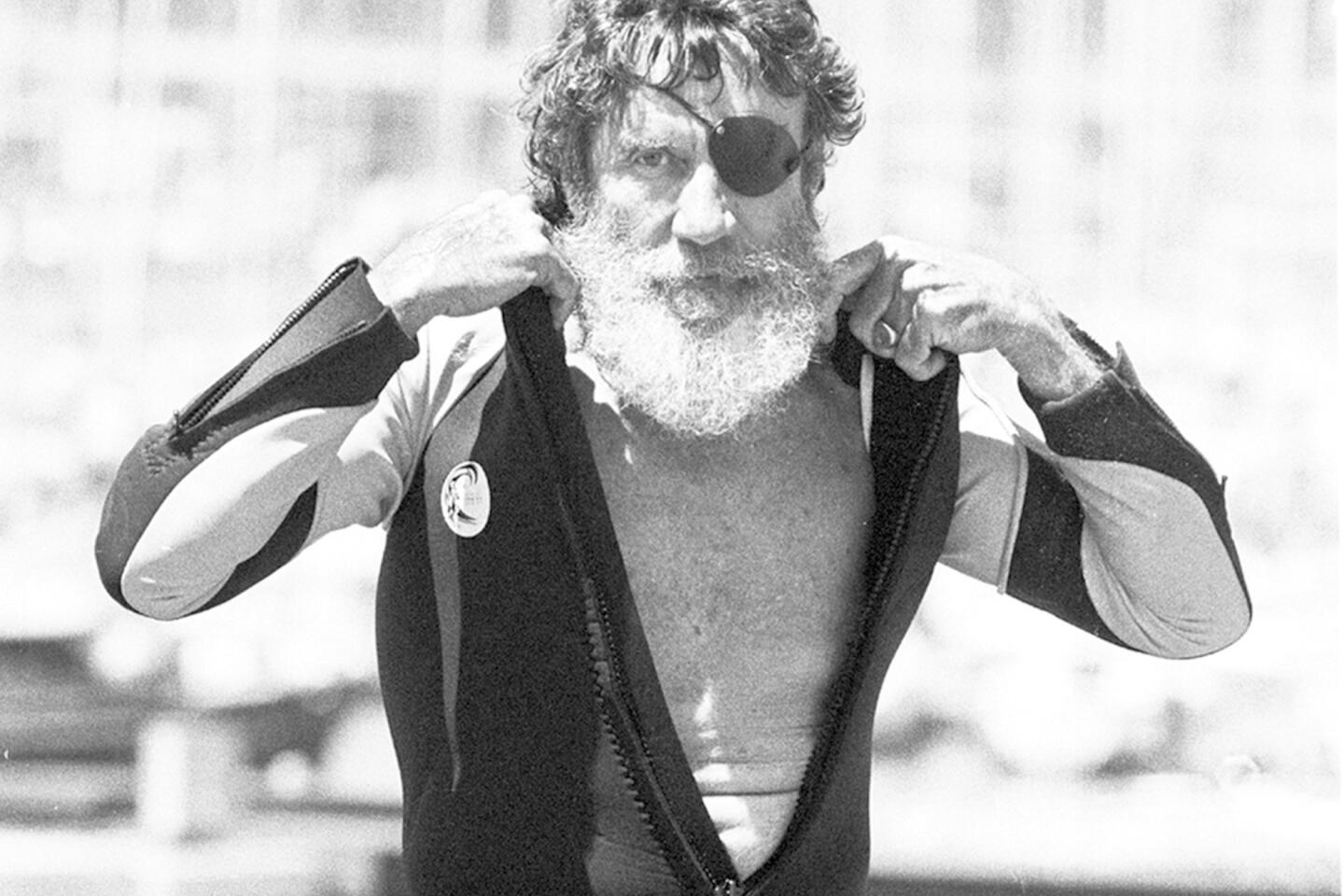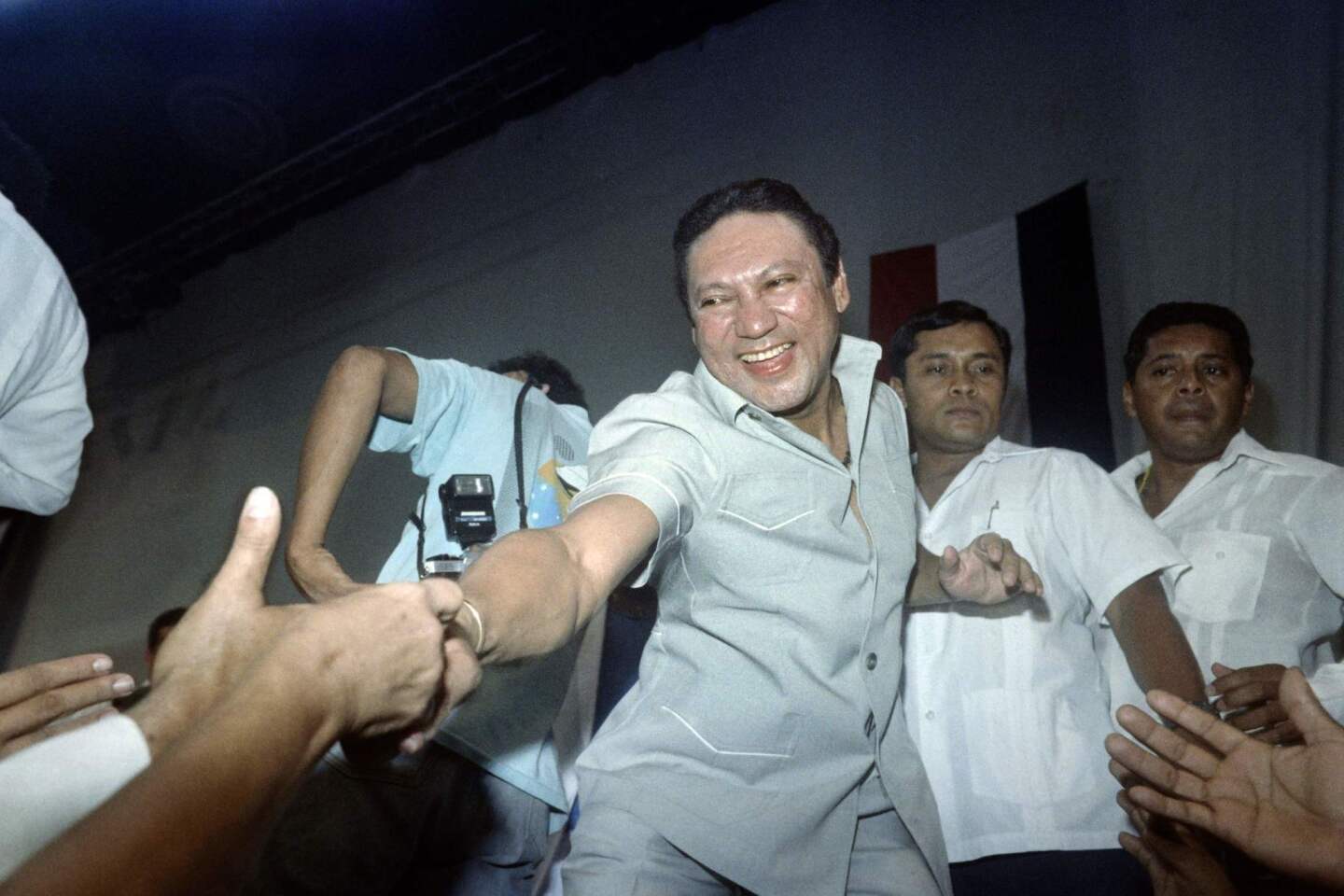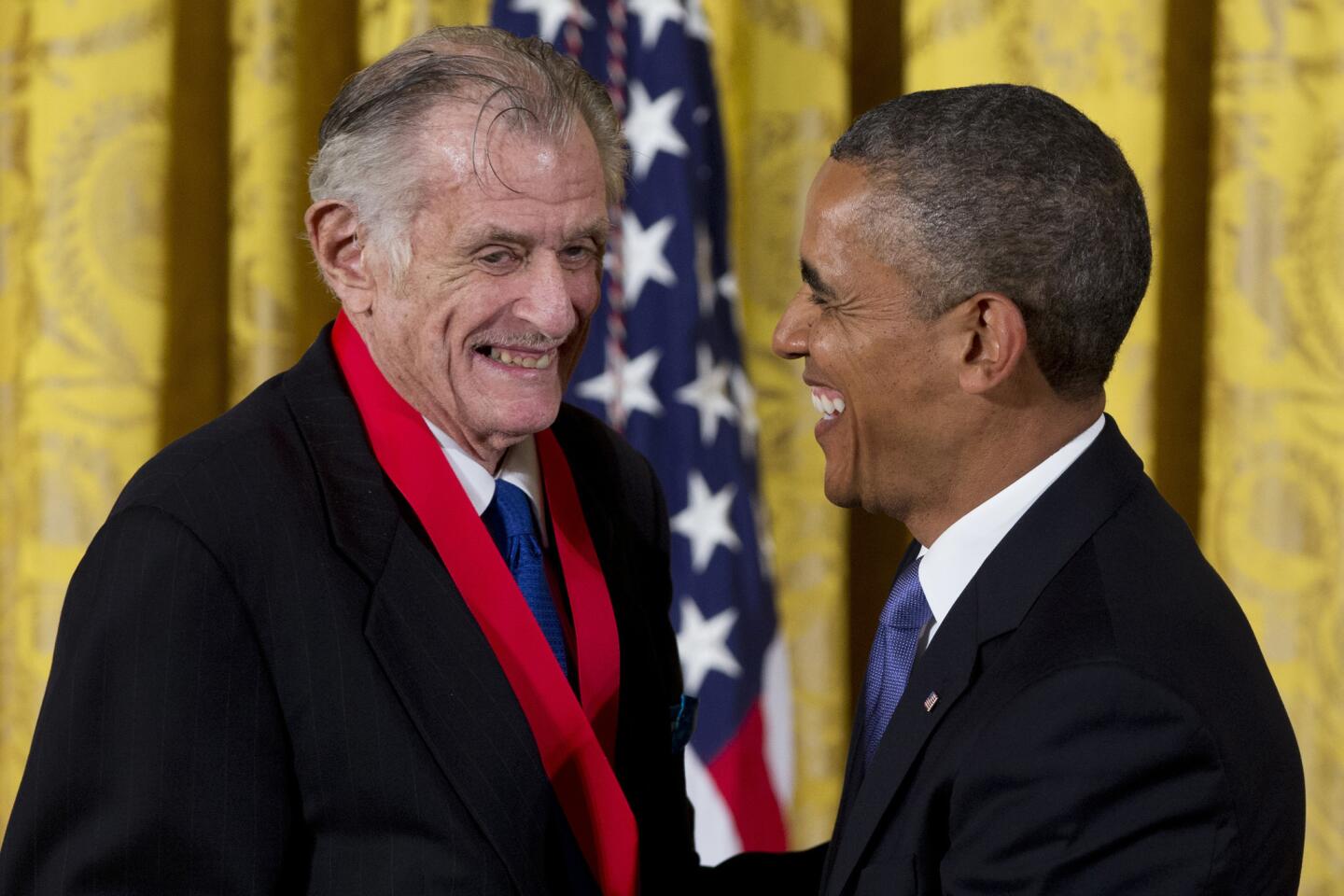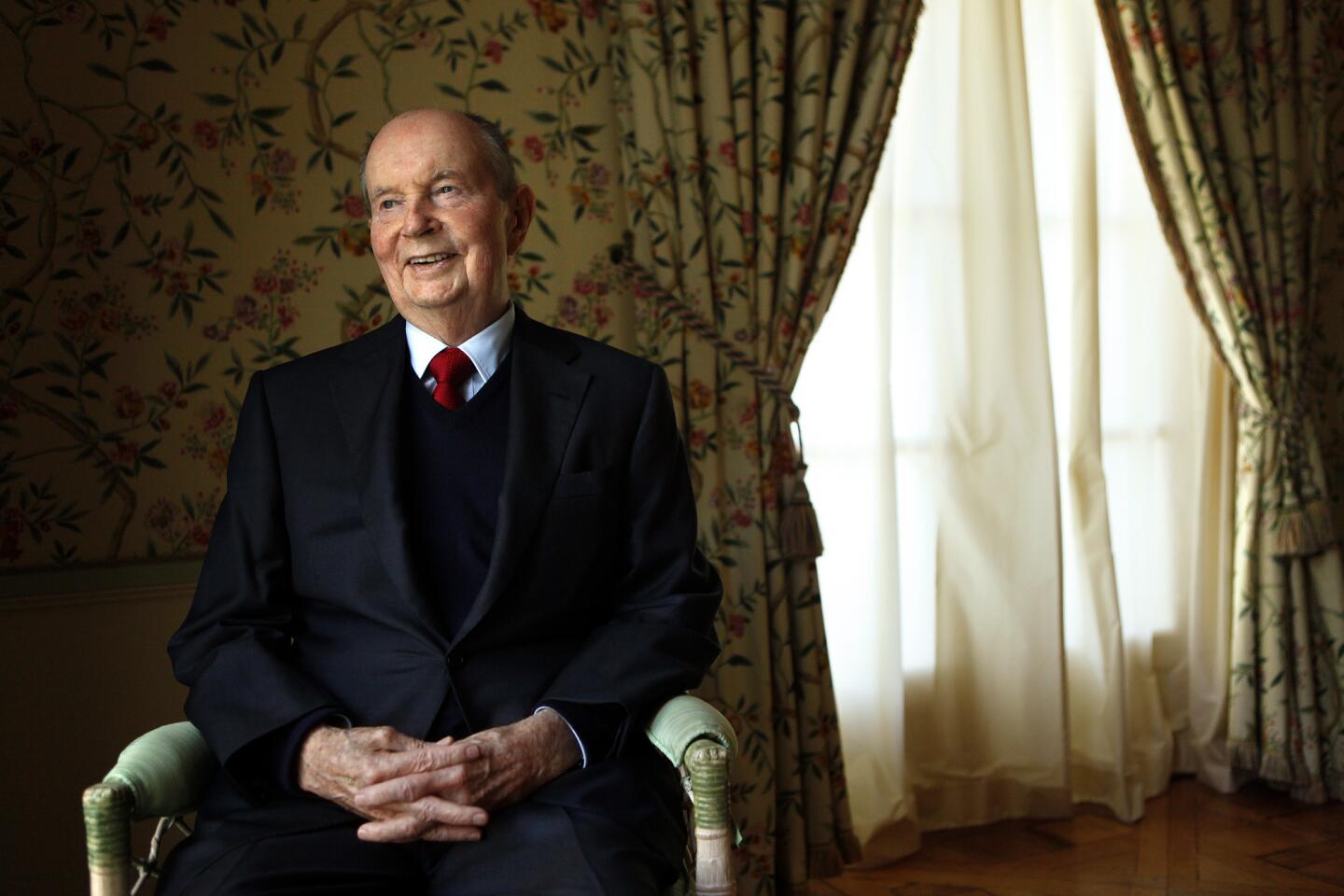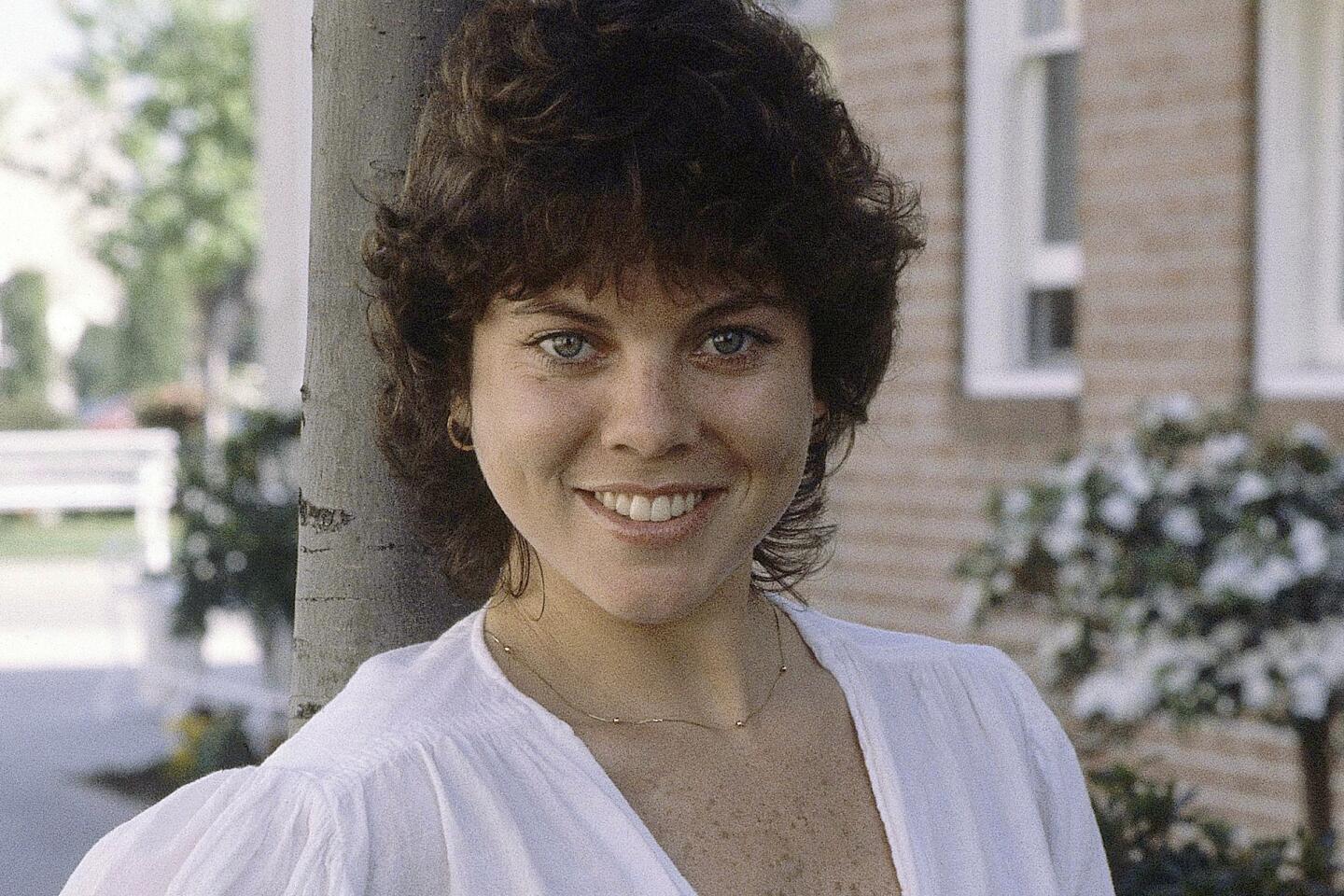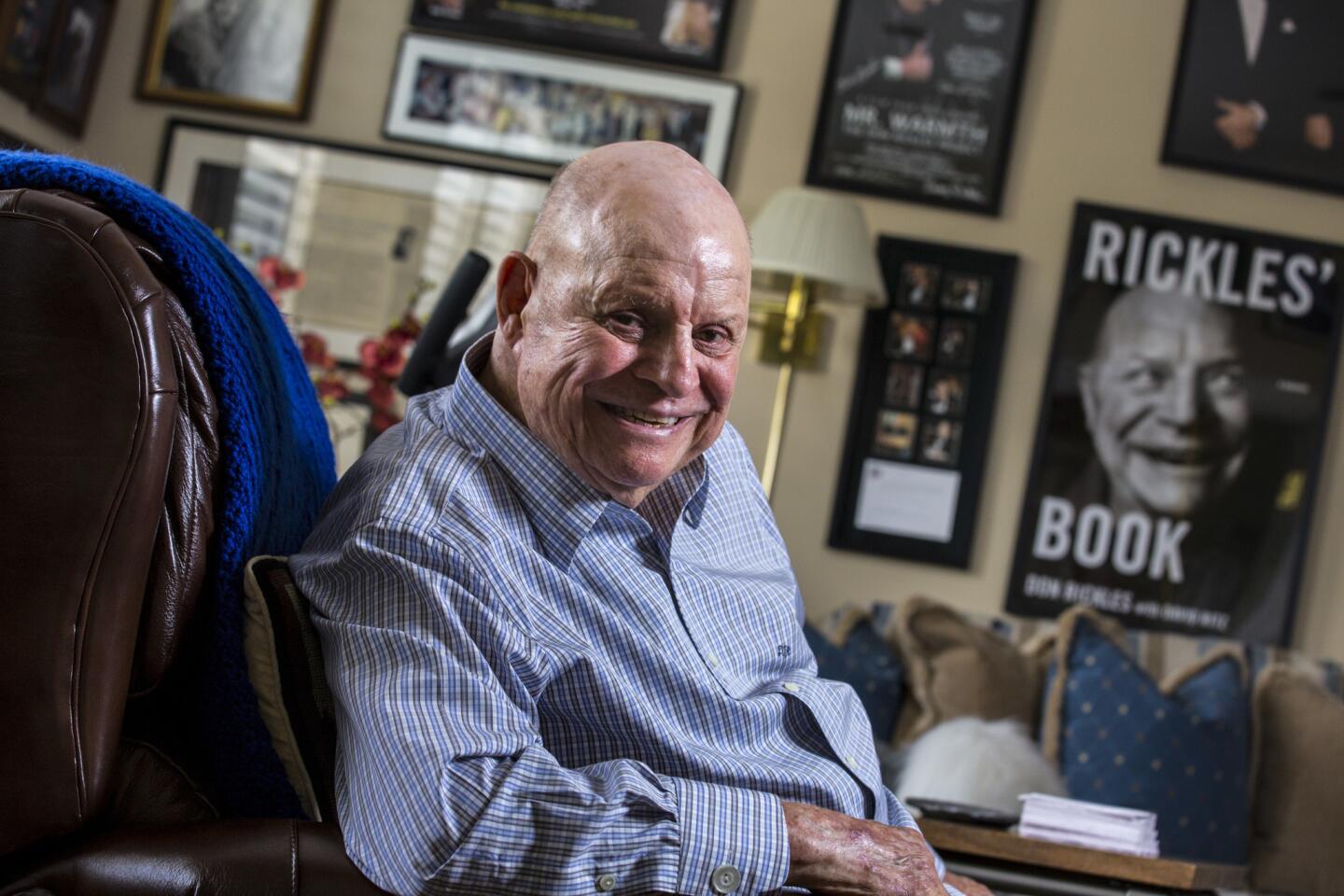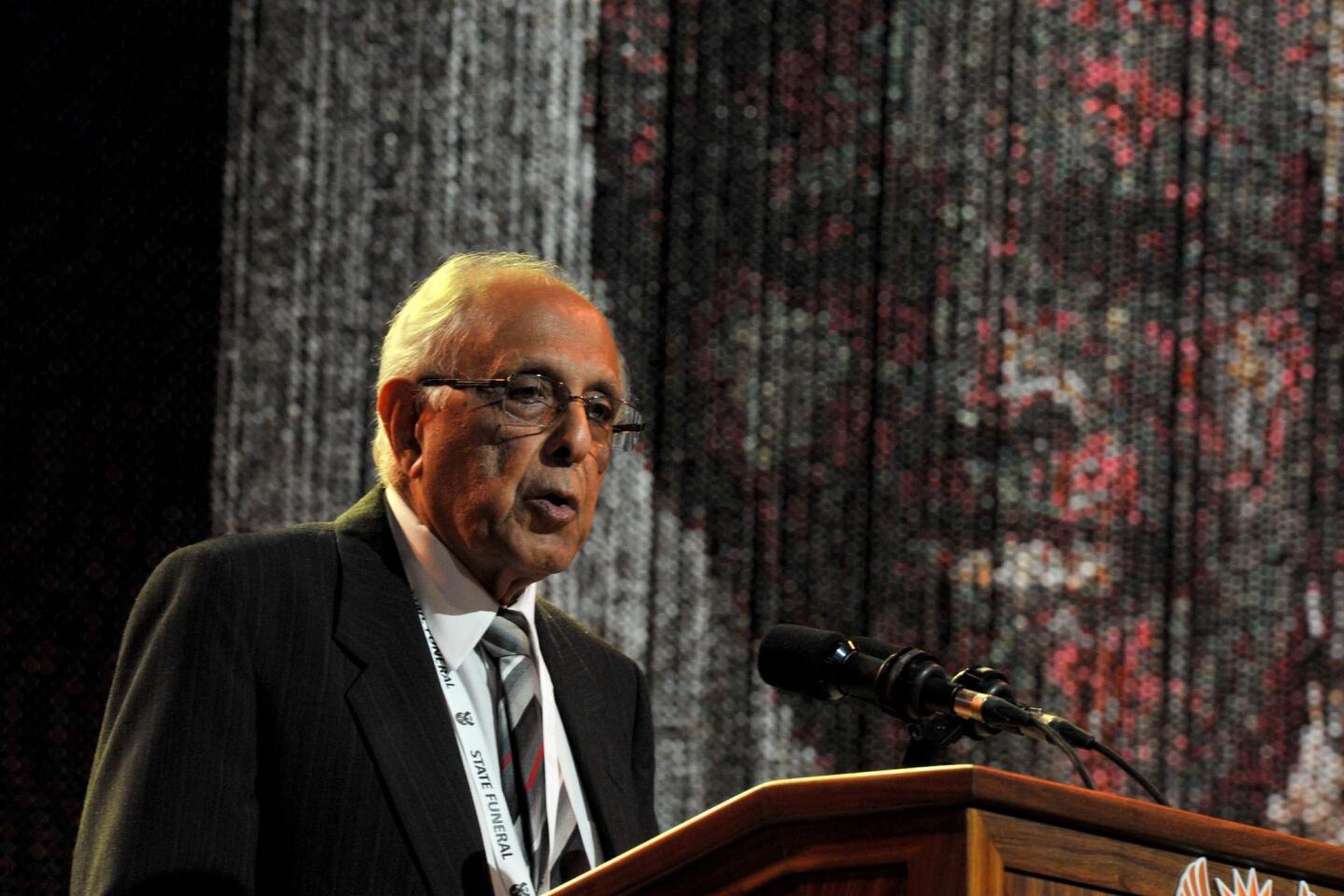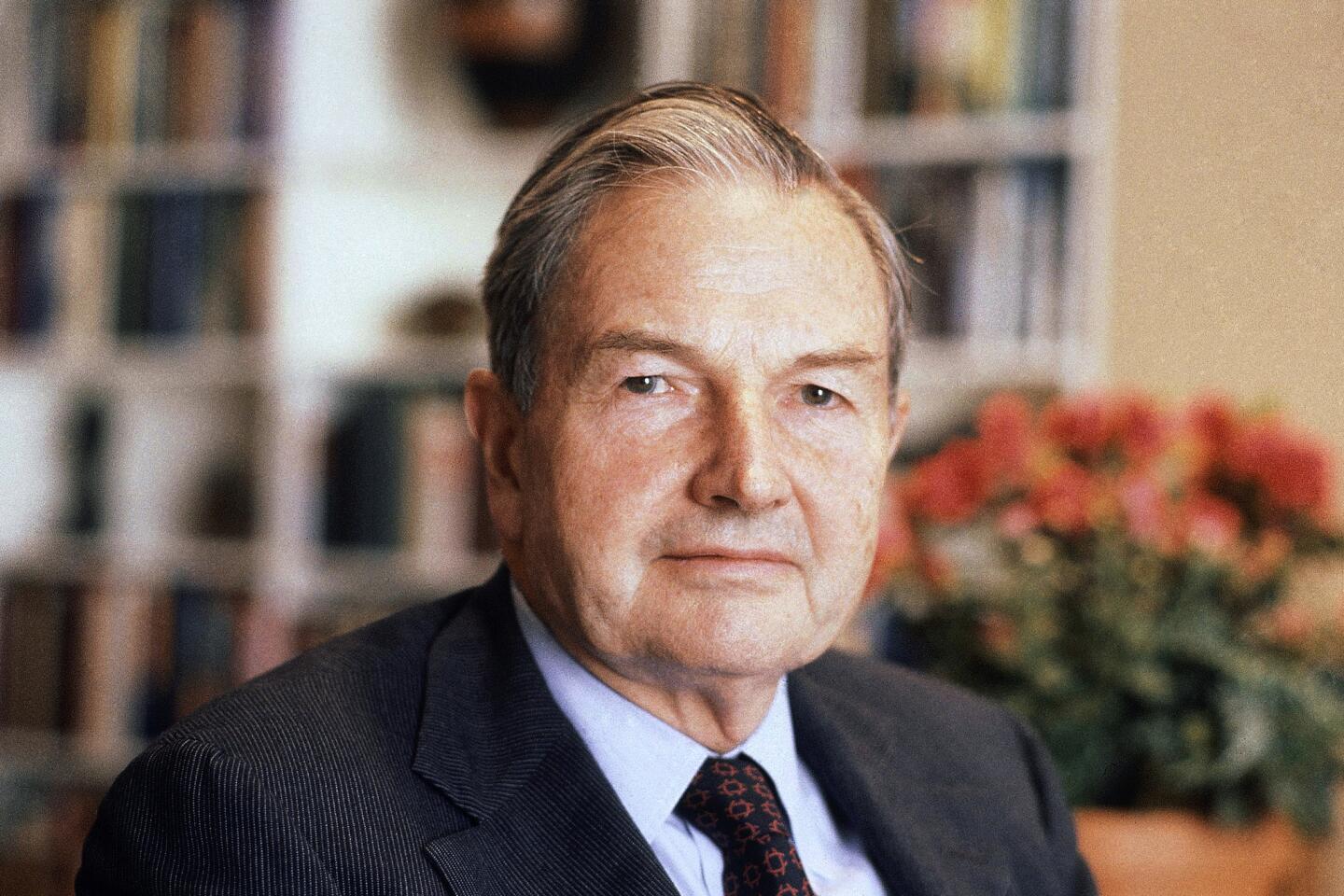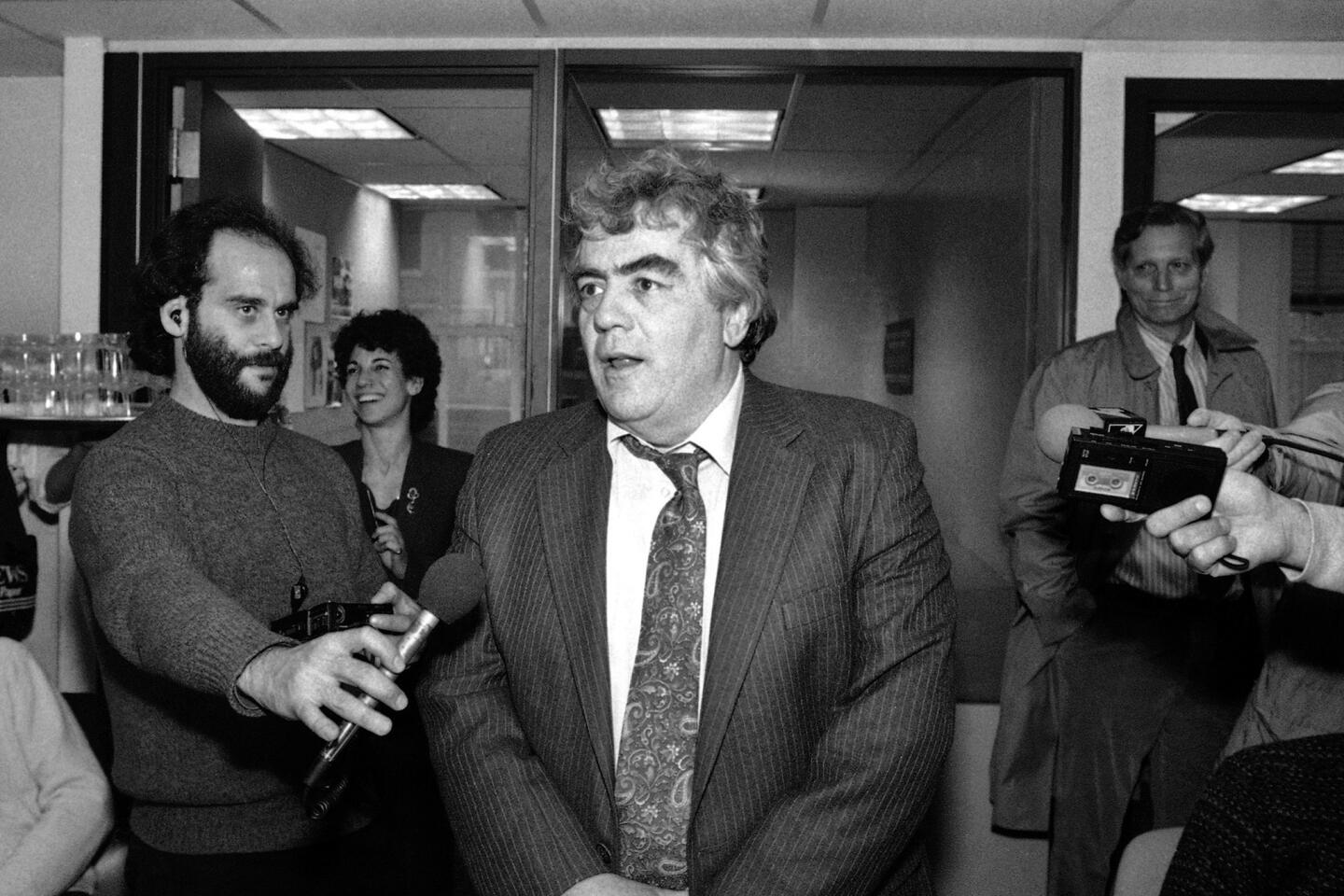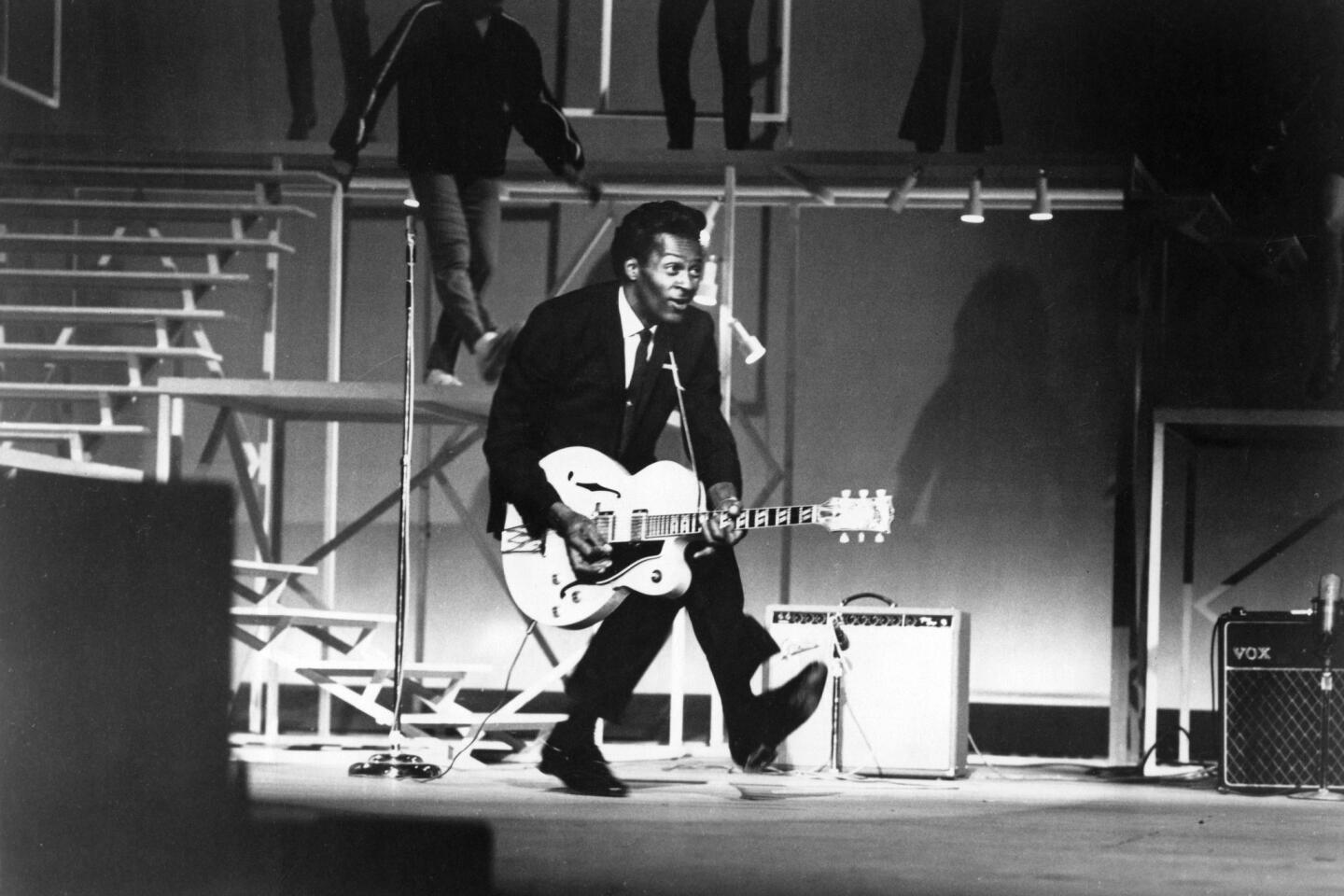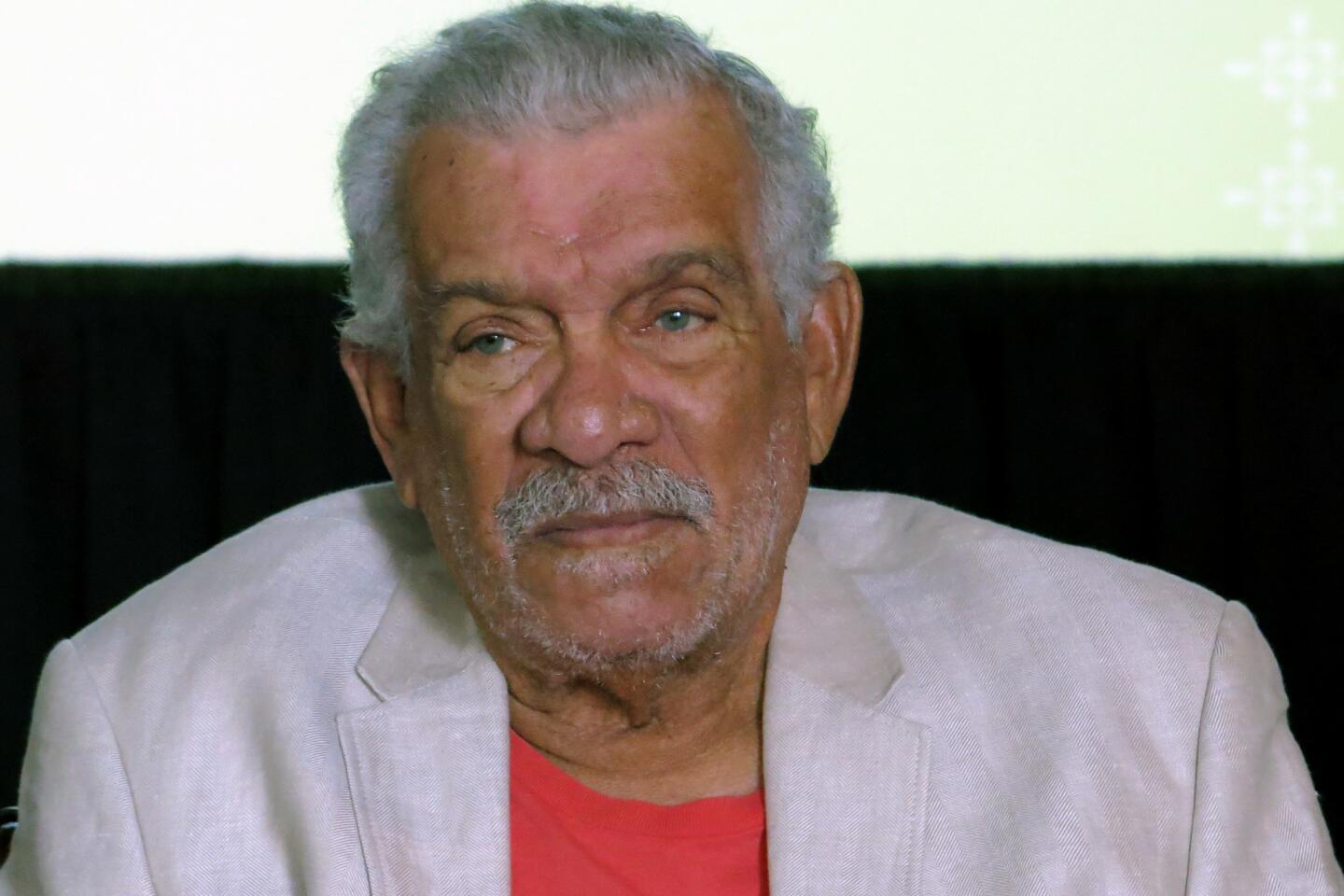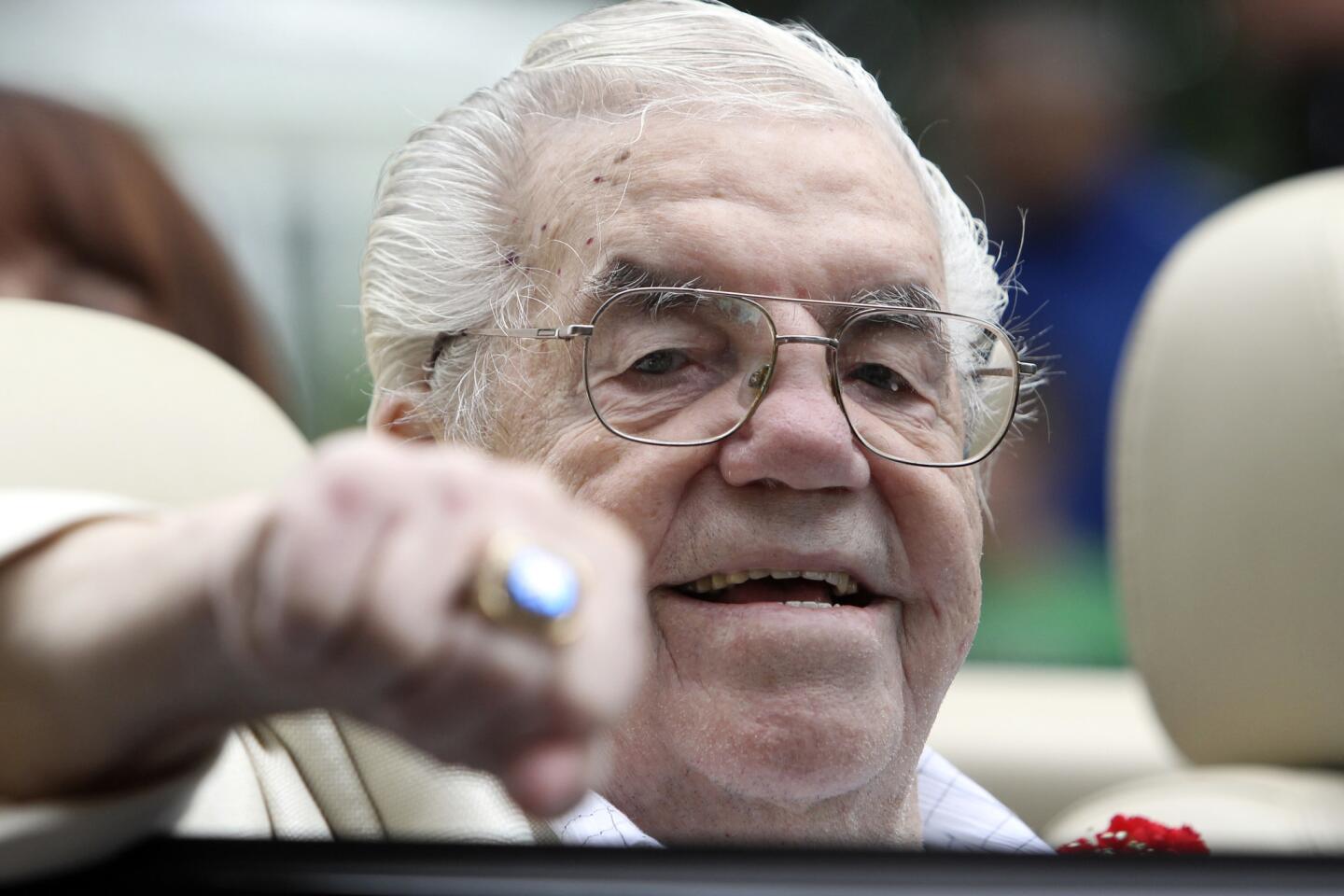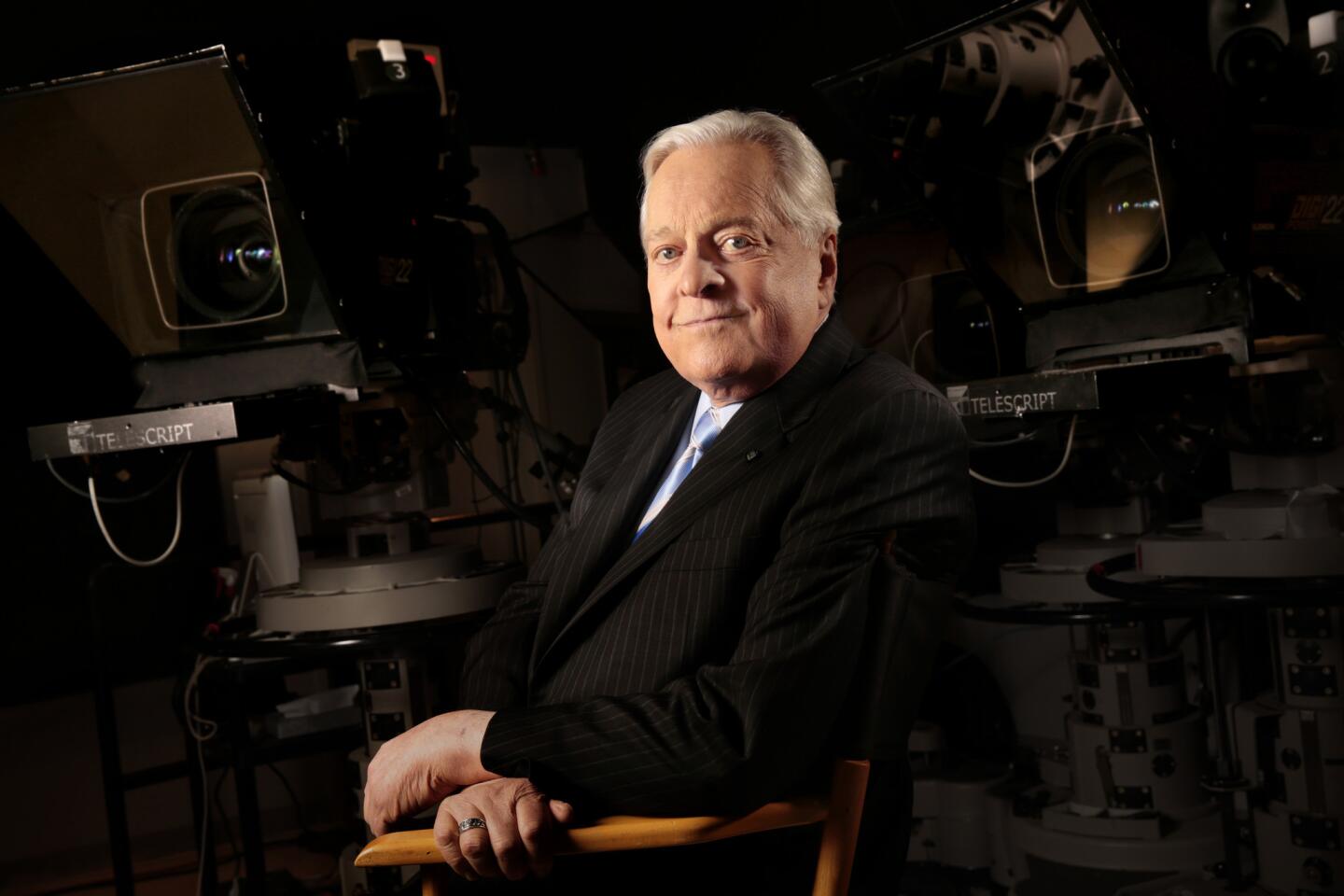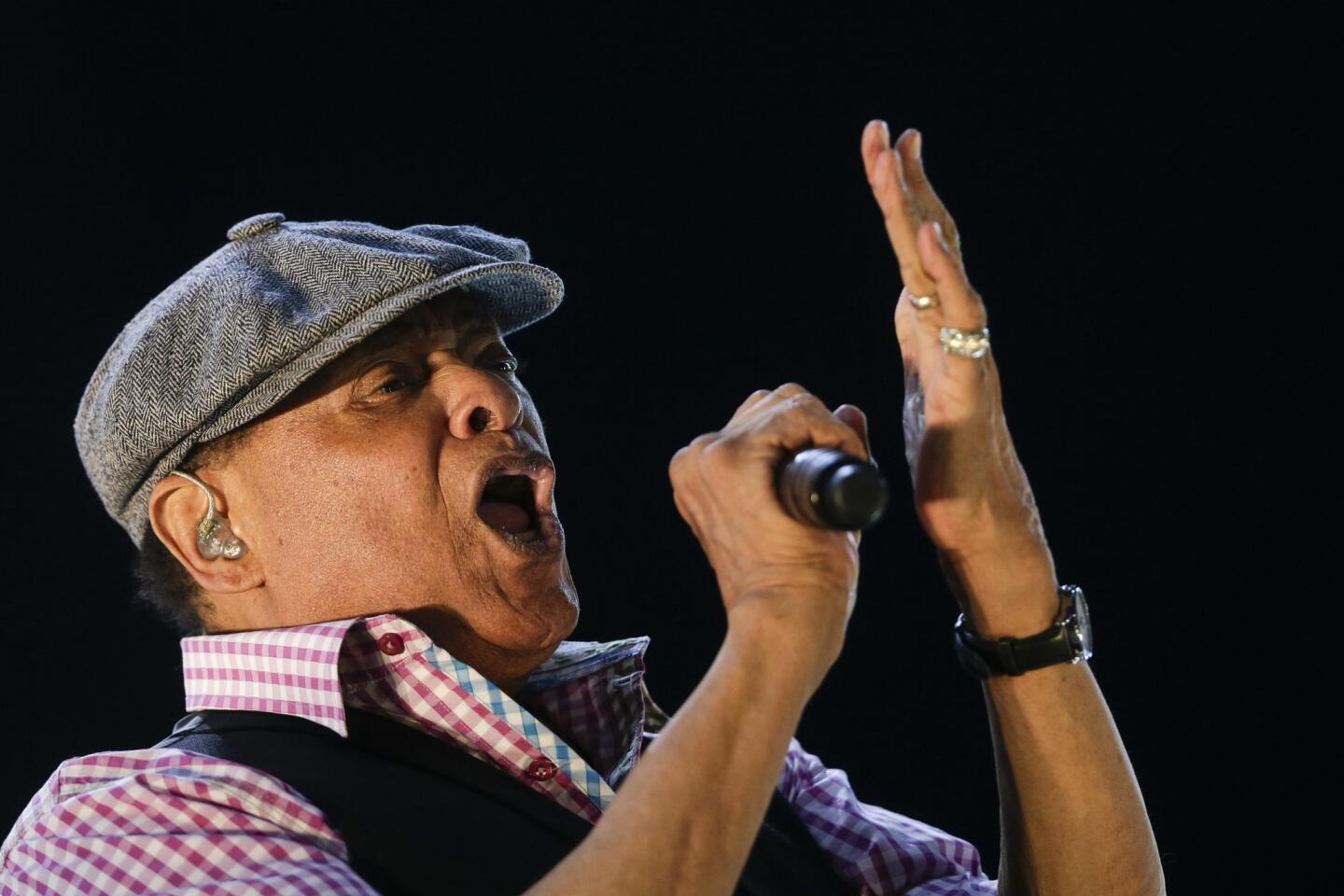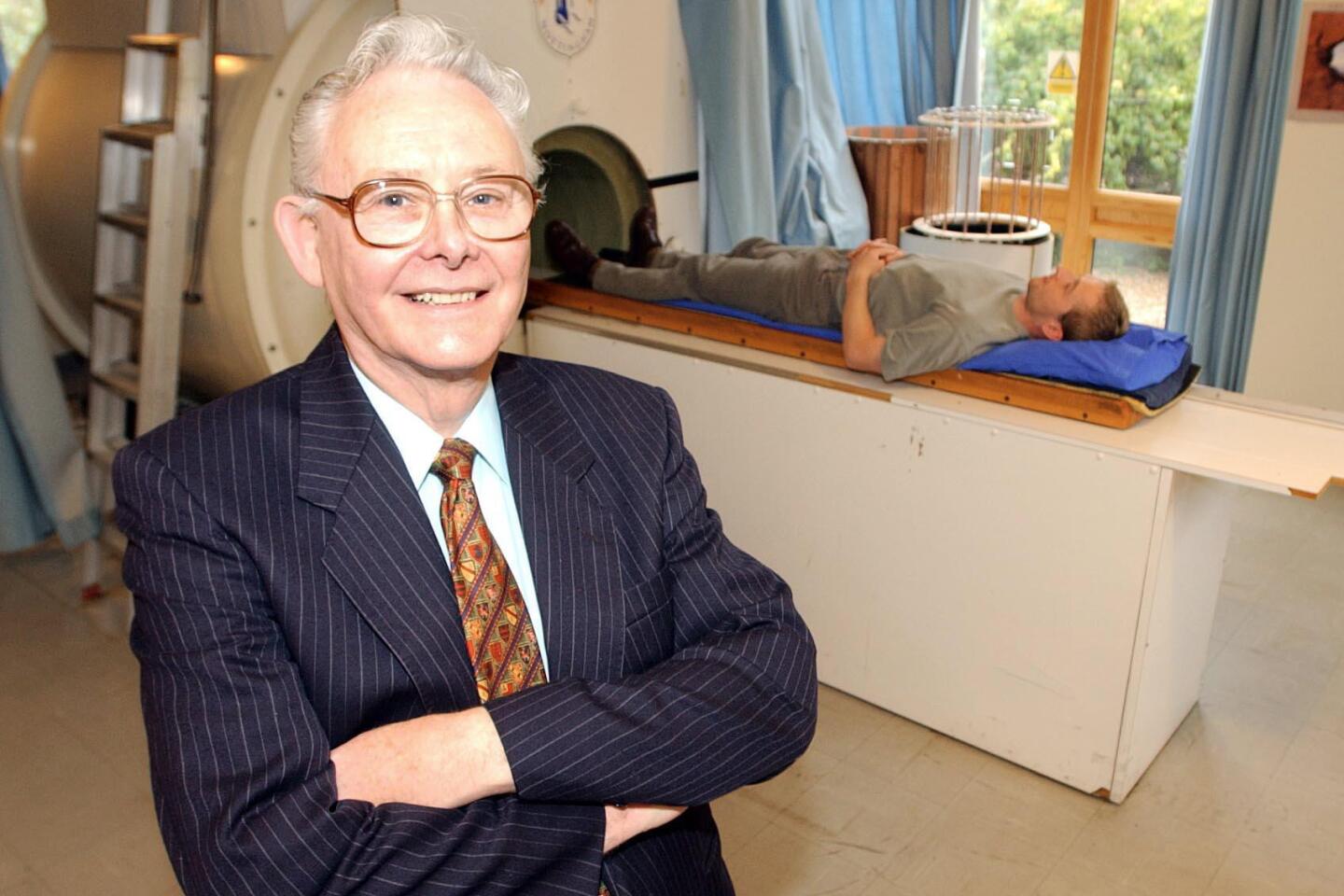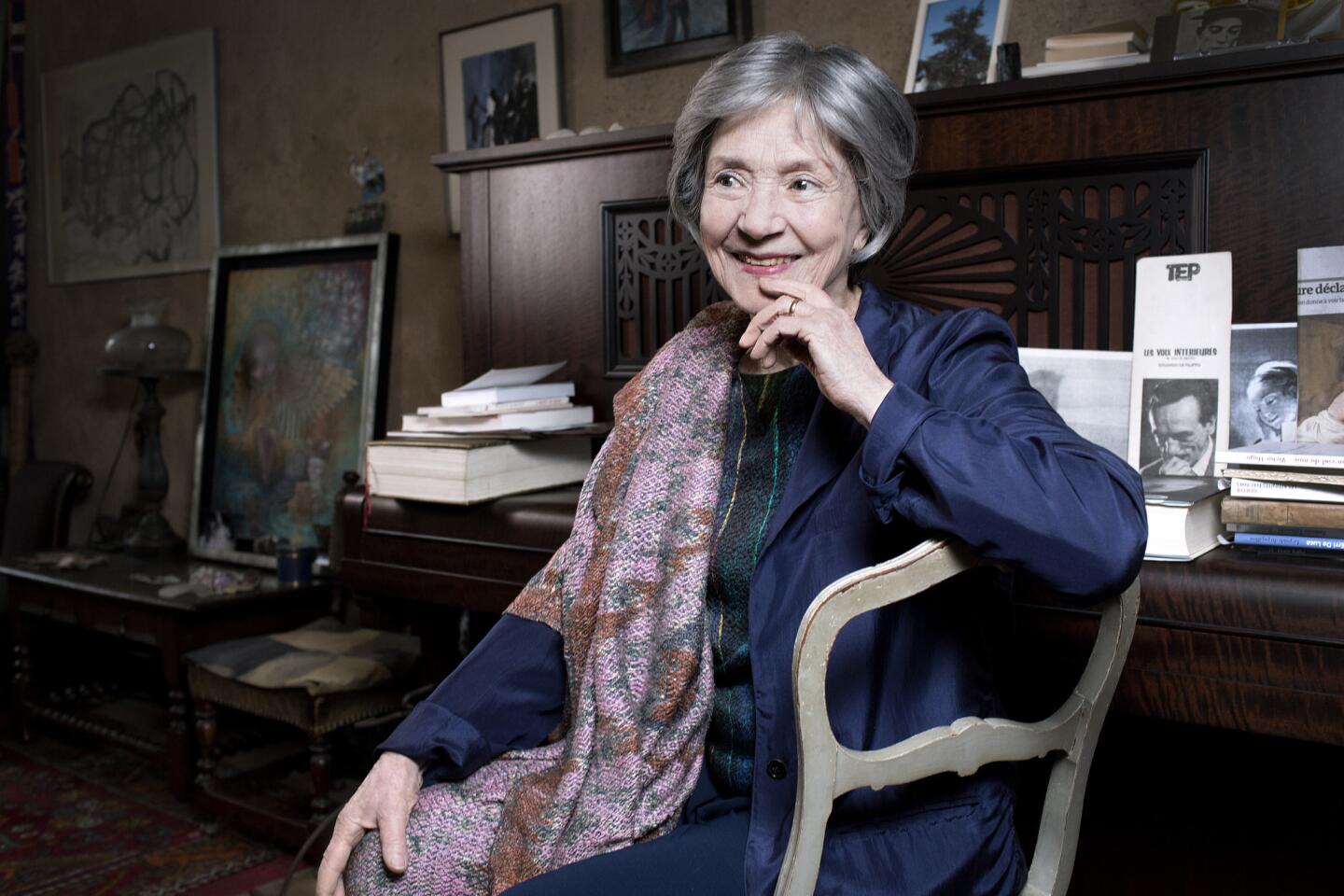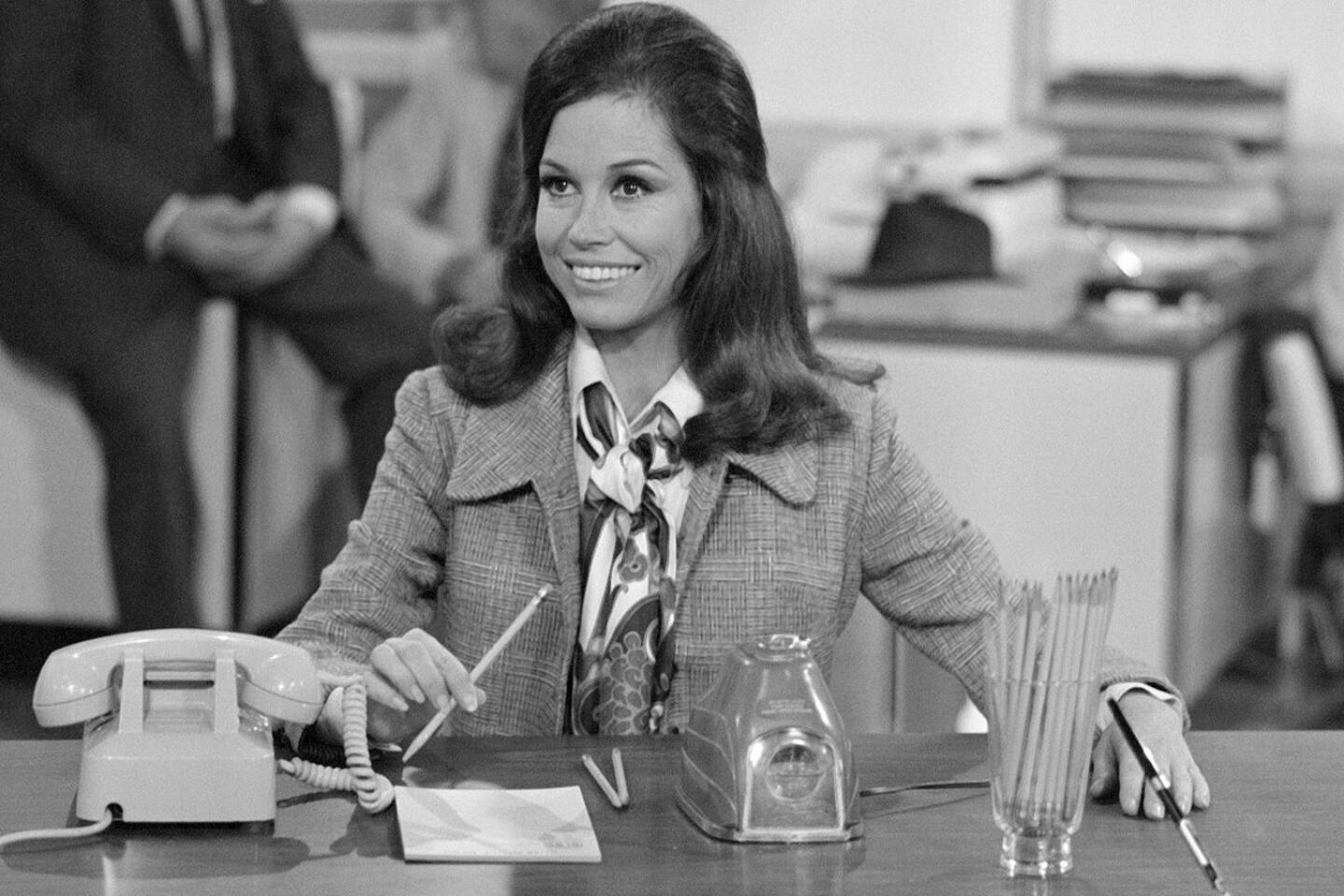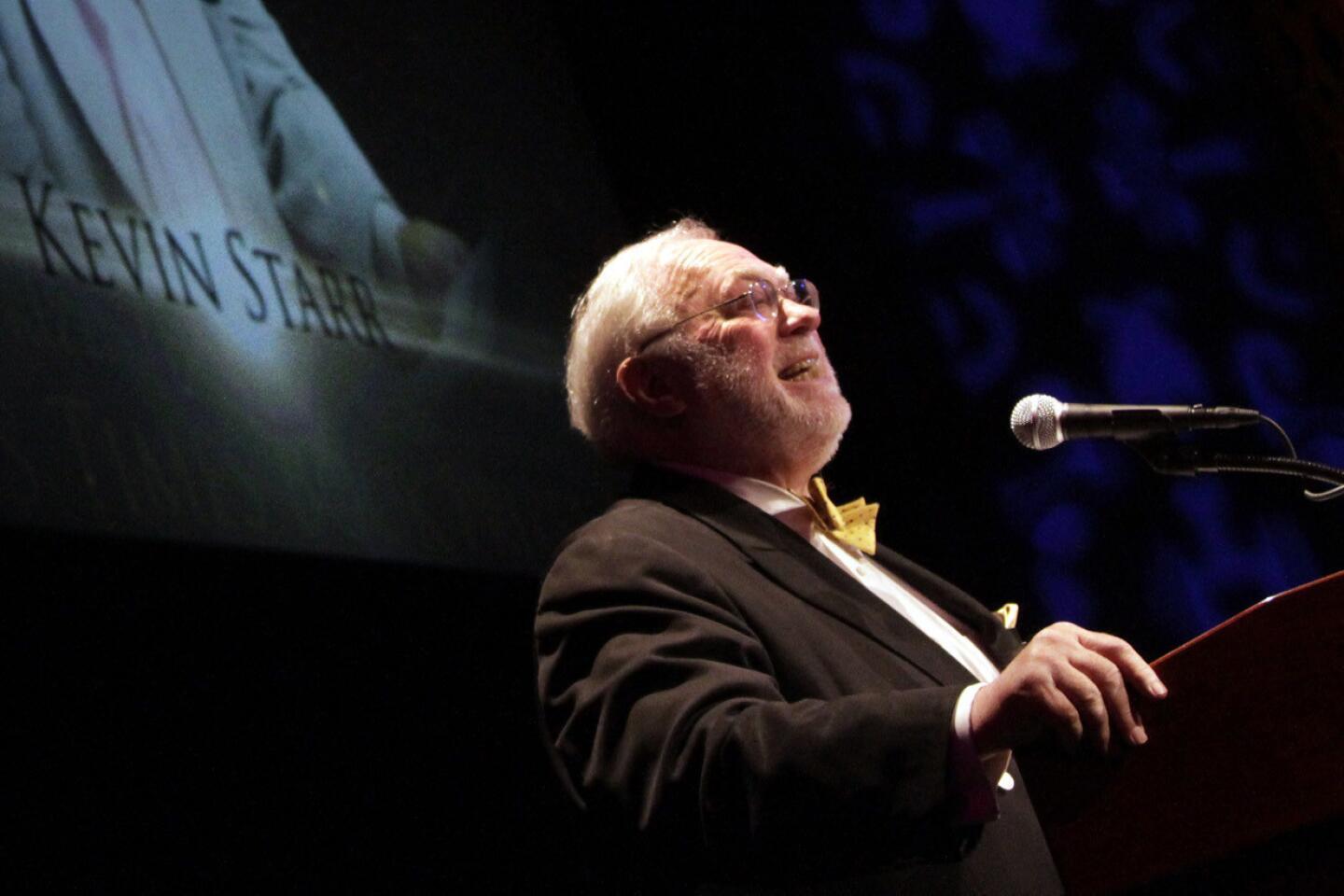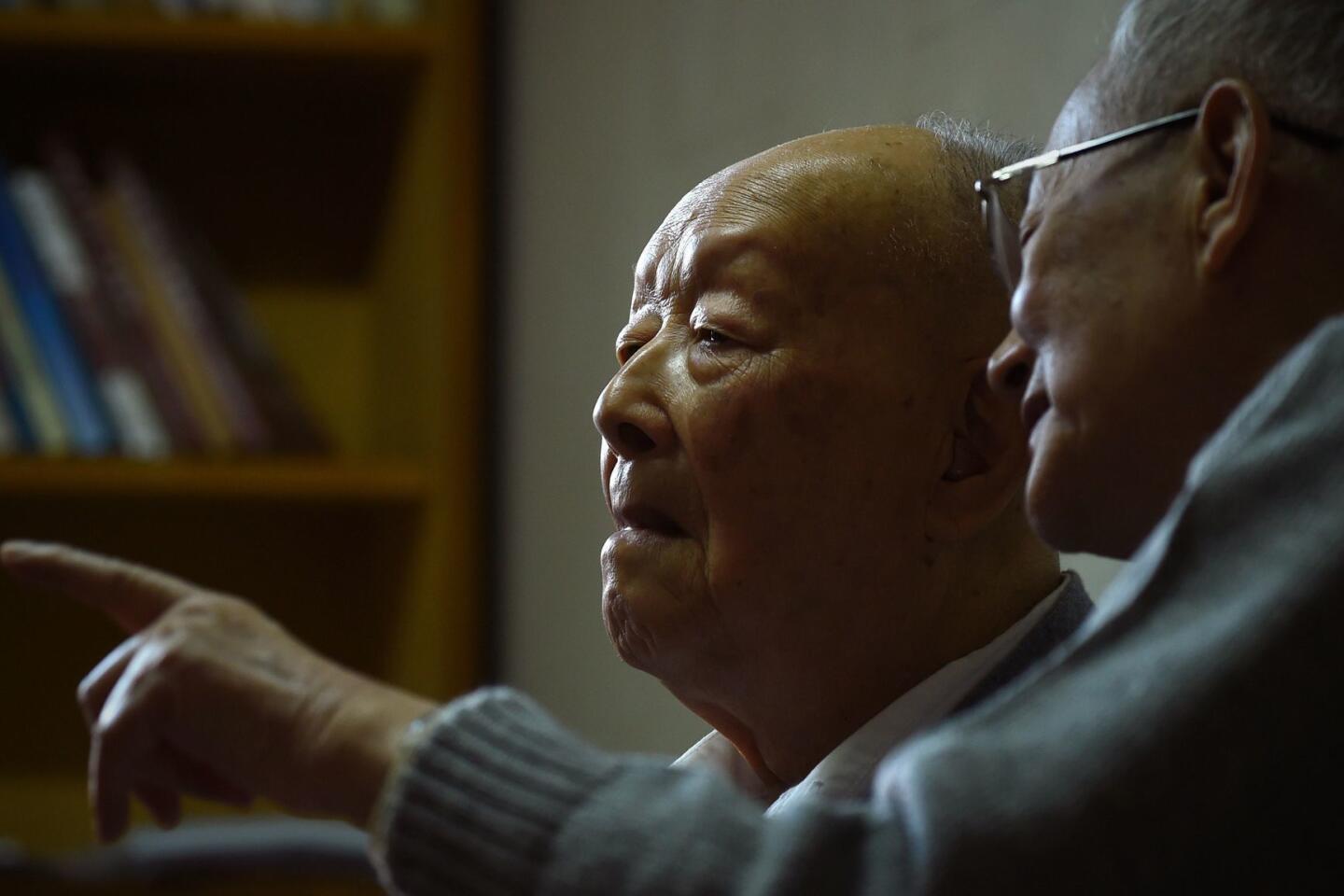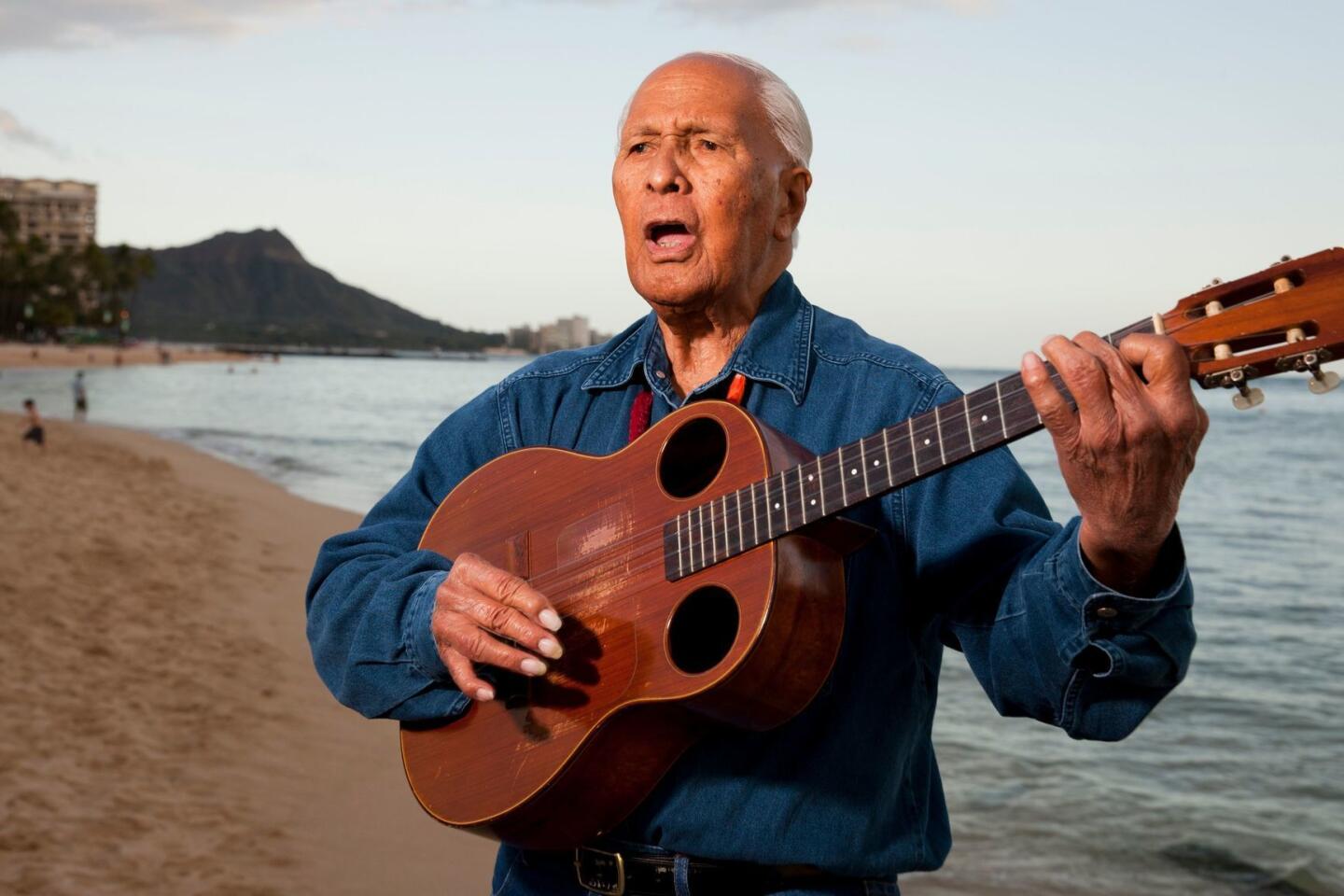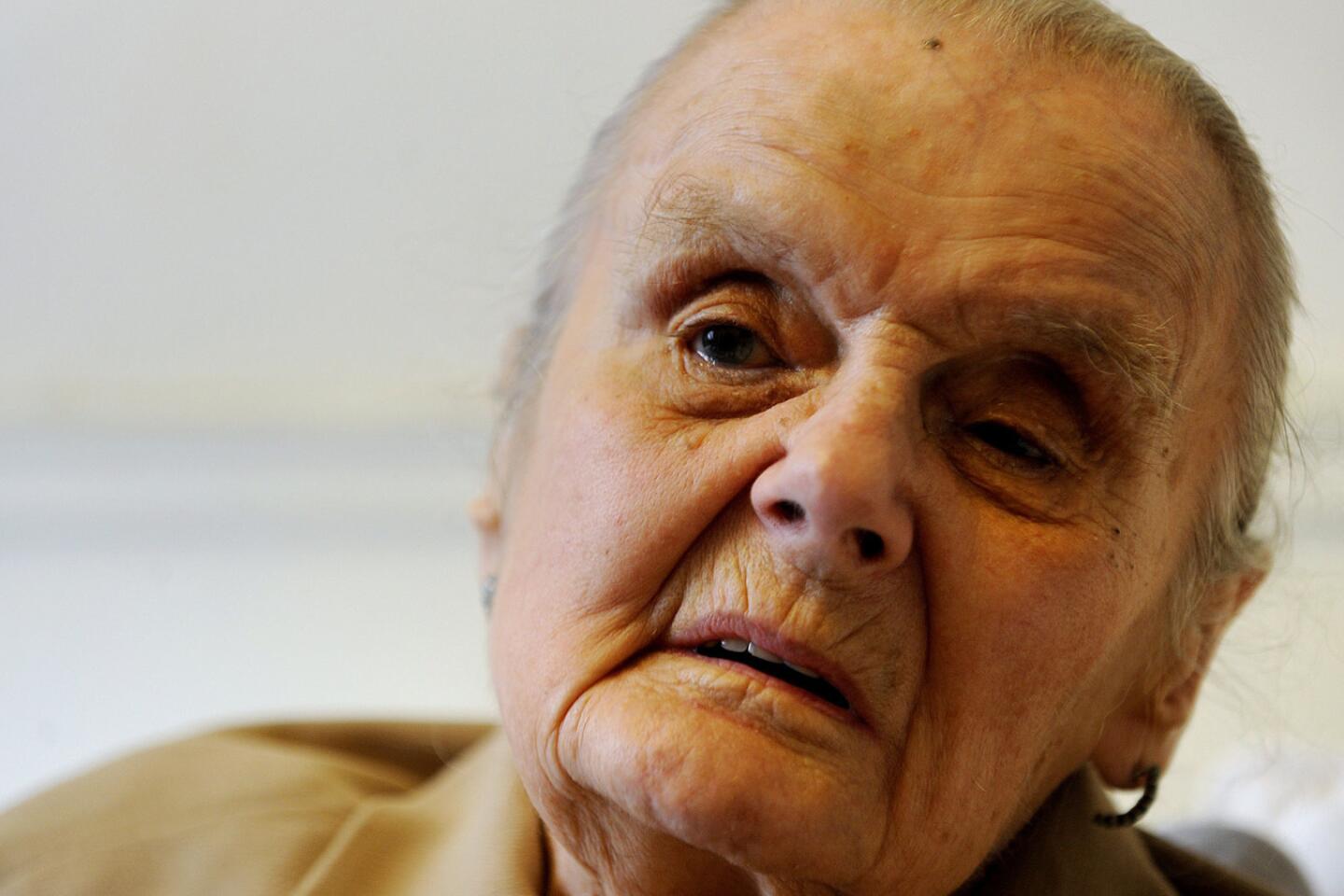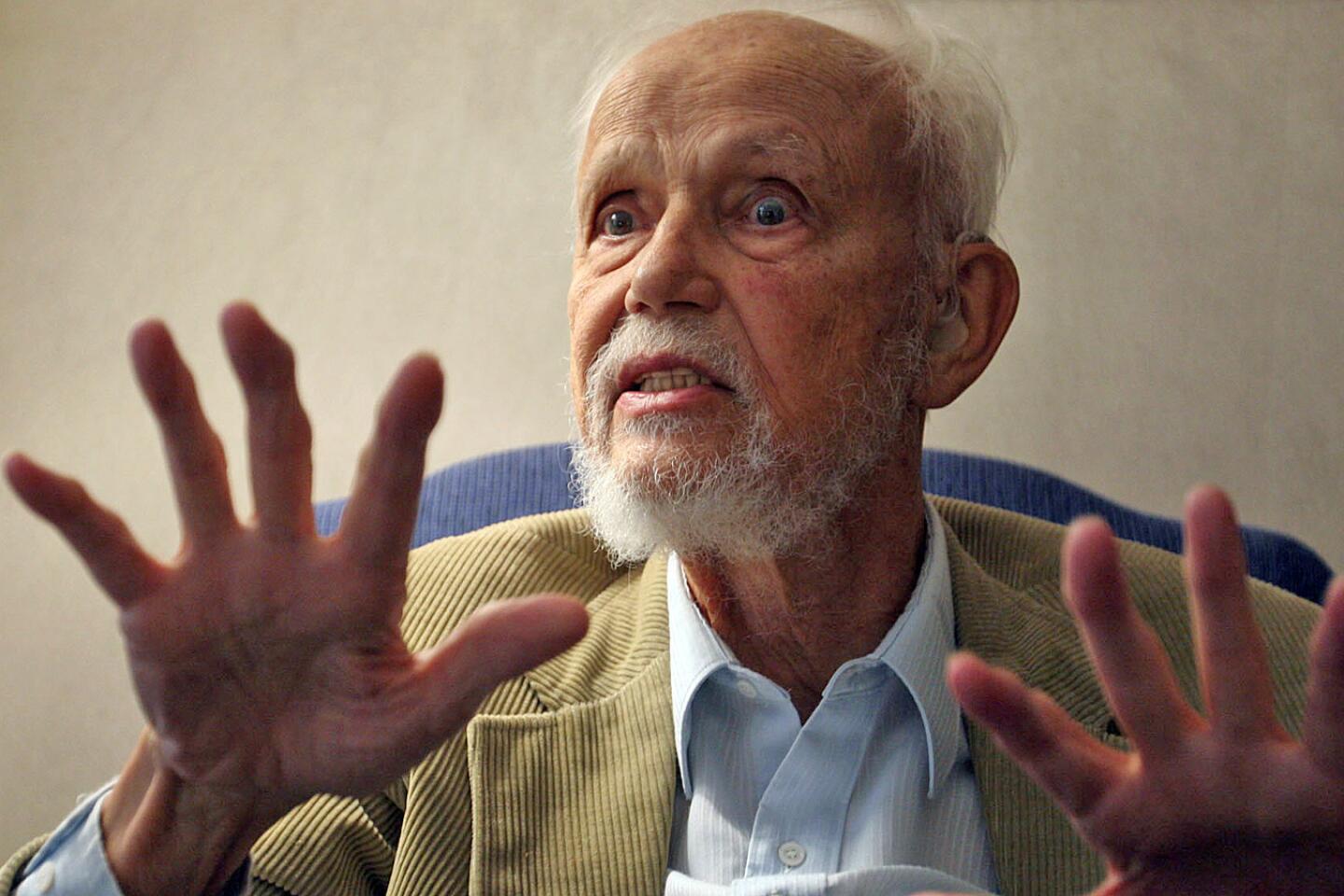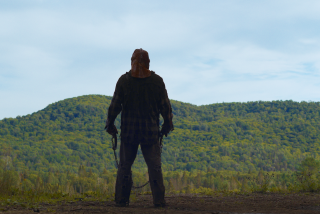It was the night of April 4, 1968, and George A. Romero was driving to New York City from Pittsburgh on a mission: In the days to come he was to meet with film studios in hopes that one might buy the horror film he was lugging in his trunk, ‚ÄúNight of the Flesh Eaters.‚ÄĚ
None of the studios was interested, but Romero still managed to get his $114,000 film in front of audiences that year. And though critics panned the picture, retitled ‚ÄúNight of the Living Dead,‚ÄĚ moviegoers were mesmerized ‚ÄĒ packing theaters, hitting the drive-ins in droves and making Romero the father of the modern movie zombie. Romero‚Äôs ‚ÄúLiving Dead‚ÄĚ franchise went on to create a subgenre of horror movie whose influence across the decades has endured, seen in movies like ‚ÄúThe Purge‚ÄĚ and TV shows like ‚ÄúThe Walking Dead.‚ÄĚ
For the record:
2:15 p.m. July 19, 2017An earlier version of this story incorrectly stated that George A. Romero’s oldest son, Cam, was from Romero’s earlier marriage to Christine Romero. Cam, whose full name is George Cameron, is from Romero’s first marriage, to Nancy Romero.
Romero died Sunday in his sleep after a ‚Äúbrief but aggressive battle with lung cancer,‚ÄĚ according to a family statement to The Times provided by his longtime producing partner, Peter Grunwald. He was 77.
Romero died while listening to the score of one his favorite films, 1952‚Äôs ‚ÄúThe Quiet Man,‚ÄĚ with his wife, Suzanne Desrocher Romero, and daughter, Tina Romero, at his side, the family said.
1/9
Director George Romero at Cannes in 2005.
(Gareth Cattermole / Getty Images) 2/9
George Romero in Beverly Hills in 2005.
(Lawrence K. Ho / Los Angeles Times) 3/9
Director George Romero is surrounded by actors dressed as zombies at the world premiere of his movie ‚ÄúLand of the Dead‚ÄĚ in Las Vegas in 2005.
(Ethan Miller / Getty Images) 4/9
George Romero in Beverly Hills in 2005.
(Chris Carlson / Associated Press) 5/9
Director George Romero in the lobby of the Hollywood Book and Poster Shop in 1988.
(Michael Edwards / Los Angeles Times) 6/9
George Romero poses for a photograph while talking about his film ‚ÄúDiary of the Dead‚ÄĚ at the Sundance Film Festival in 2008.
(Amy Sancetta / Associated Press) 7/9
Producer Peter Grunwald, left, director George Romero and special makeup effects artist Greg Nicotero in 2005.
(Ethan Miller / Getty Images) 8/9
George Romero on stage with a zombie piano player at the Scream Awards in Los Angeles in 2009.
(Chris Pizzello / Associated Press) 9/9
Producers Mark Canton and Peter Grunwald, left, with director George Romero and special makeup effects artist Greg Nicotero in 2005.
(Ethan Miller / Getty Images) Romero will be remembered best for co-writing (with John A. Russo) and directing ‚ÄúNight of the Living Dead,‚ÄĚ which showed later generations of filmmakers such as Tobe Hooper and John Carpenter that generating big scares didn‚Äôt require big budgets. ‚ÄúLiving Dead‚ÄĚ spawned an entire school of zombie knockoffs, and Romero‚Äôs own sequels were 1978‚Äôs ‚ÄúDawn of the Dead,‚ÄĚ 1985‚Äôs ‚ÄúDay of the Dead,‚ÄĚ 2005‚Äôs ‚ÄúLand of the Dead,‚ÄĚ 2007‚Äôs ‚ÄúDiary of the Dead‚ÄĚ and 2009‚Äôs ‚ÄúGeorge A. Romero‚Äôs Survival of the Dead.‚ÄĚ
To get that first film made, however, Romero turned to a resourceful team of Pittsburgh TV-commercial producers. For distribution, the rookie filmmaker turned to the Walter Reade Organization, the parent of Continental Releasing, which specialized in artsy movies like John Cassavetes‚Äô ‚ÄúFaces.‚ÄĚ The director and his team got 14 prints made, handled their own promotion and opened the picture at 14 local theaters. They financed a world premiere on Halloween night.
Most critics trashed the movie, with Daily Variety citing ‚Äúunrelieved sadism ‚Ķ which casts serious aspersions on the integrity of its makers.‚ÄĚ But audiences loved it, and drive-in operators took out newspaper ads to apologize for turning away so many customers.
Romero once told The Times that he was surprised at critics‚Äô reactions; he said Roger Ebert‚Äôs review all but called ‚ÄúLiving Dead‚ÄĚ a movie spawned by the devil.
Over time, however, fans have pointed out that, setting aside the graphic violence that made Romero‚Äôs work so distinct, there were sociopolitical messages that made his movies noteworthy, starting with the casting of that first ‚ÄúLiving Dead‚ÄĚ picture.
‚ÄúI think the reason it got noticed was the fact that we used an African American actor in a role that didn‚Äôt need to be played by an African American actor, and then he gets gunned down by this posse,‚ÄĚ Romero said, noting that the role was originally written for a white man. On the night of that drive to New York City, he said, ‚Äúwe heard on the radio that [the Rev. Martin Luther] King had been assassinated. So now all of a sudden the power of the film was ratcheted up that much more.‚ÄĚ
‚ÄúLiving Dead‚ÄĚ went on to gross upward of $50 million.
‚ÄúHe took the image of the zombie, which up to that point was rooted in the Caribbean and part of a black Caribbean culture, and turned it into a metaphor for all sorts of things in American culture,‚ÄĚ said Leo Braudy, a USC professor who last year published ‚ÄúHaunted: On Ghosts, Witches, Vampires, Zombies, and Other Monsters of the Natural and Supernatural Worlds.‚ÄĚ
Up to this point, Braudy said, horror movies focused on individuals like Frankenstein‚Äôs monster, Dr. Jekyll and Mr. Hyde. ‚ÄúThe zombie is unique because it‚Äôs part of a group representing the potential threat of a mass mind,‚ÄĚ he said.
1/46
The Santa Barbara writer created one of the first modern hard-boiled female private eyes and topped bestseller lists for decades, inspiring loyal readers to name their daughters after the series’ heroine, Kinsey Millhone. She was 77. Full obituary
(Carolyn Cole / Los Angeles Times) 2/46
The veteran sports broadcaster was long recognized as one of the most versatile and perhaps most enthusiastic announcers of his era. He also was an author, a longtime fixture at Pasadena’s Rose Parade, the host of several sports-themed TV game shows and was still calling San Diego Padres baseball games in his later years. He was 82. Full obituary
(Lenny Ignelzi / Associated Press) 3/46
Lee, elected in 2011, was the first Chinese American mayor of San Francisco, home to the oldest Chinatown in the United States. He oversaw years of dramatic growth that transformed the city’s skyline while also sending real estate values to stratospheric levels. He was 65. Full obituary
(David Butow / For The Times) 4/46
The singer and actor became a TV icon in the 1960s playing the lovably na√Įve Gomer Pyle on ‚ÄúThe Andy Griffith Show‚ÄĚ and the spinoff series ‚ÄúGomer Pyle, U.S.M.C.‚ÄĚ He was 87. Full obituary
(CBS Photo Archive / Getty Images) 5/46
Called ‚Äúthe Elvis of Opera‚ÄĚ and the ‚ÄúSiberian Express‚ÄĚ by some, Hvorostovsky was known for his velvety baritone voice, dashing looks and shock of flowing white hair. He was 55. Full obituary
(Shiho Fukada / Associated Press) 6/46
The syndicated gossip columnist’s mixture of banter, barbs, and bon mots about the glitterati helped her climb the A-list as high as many of the celebrities she covered. She was 94. Full obituary
(Stephen Chernin / Associated Press) 7/46
The fashion iconoclast’s clingy styles helped define the 1980s. Naomi Campbell was a favored model, and Michelle Obama wore his designs as U.S. first lady. He was 77. Full obituary
(Barbara Davidson / Los Angeles Times) 8/46
Kaji was the founding president of the Japanese American National Museum, established in 1992 in Little Tokyo. Years earlier, he established his own accounting firm and was part of a group that founded Merit Savings & Loan, one of the first and one of the few Japanese American-owned banks. He was 91. Full obituary
(Edward Ornelas / Los Angeles Times) 9/46
As one of the founding fathers of rock ’n’ roll, Fats Domino blazed a singular path in the history of popular music. Pounding a piano and booming in a baritone both warm and conversational, he gave the nascent genre a shot of rhythm and blues, jazz and boogie woogie from his native New Orleans. He was 89. Full obituary
(AFP / Getty Images) 10/46
Best known for his portrayal of the sharp-tongued butler in the TV sitcoms ‚ÄúSoap‚ÄĚ and ‚ÄúBenson,‚ÄĚ Guillaume also played Nathan Detroit in the first all-black version of ‚ÄúGuys and Dolls‚ÄĚ and became the first African American to sing the title role in ‚ÄúThe Phantom of the Opera,‚ÄĚ appearing with an otherwise all-white cast in Los Angeles. He was 89. Full obituary
(Ann Johansson / For The Times) 11/46
Hefner built a publishing and entertainment empire on the idea that Americans should shed their puritanical hang-ups and enjoy sex. As the founder of Playboy magazine, he pitched an alternative standard ‚ÄĒ swinging singlehood ‚ÄĒ which portrayed the desire for sex as being as normal as craving apple pie. He was 91. Full obituary
(George Brich / Associated Press) 12/46
The prolific character actor and occasional leading man brought a soulful, hangdog presence to such varied films as ‚ÄúAlien,‚ÄĚ ‚ÄúParis, Texas,‚ÄĚ ‚ÄúRepo Man‚ÄĚ and ‚ÄúPretty in Pink,‚ÄĚ becoming a favorite of film fans and directors alike. He was 91. Full obituary
(Richard Derk / Los Angeles Times) 13/46
The gay rights pioneer brought a Supreme Court case that struck down parts of a federal law that banned same-sex marriage and led to federal recognition for gay spouses. She was 88. Full obituary
(Richard Drew / Associated Press) 14/46
Stomping over miniature bridges and buildings in a rubber suit, Nakajima portrayed Godzilla, the fire-breathing, screeching monster that became Japan’s star cultural export and an enduring symbol of the pathos and destruction of the Atomic Age. Nakajima said he invented the character from scratch, and developed it by going to a zoo to study how elephants and bears moved. He was 88. Full obituary
(Junji Kurokawa / Associated Press) 15/46
Kanno spent what should have been his final high school years confined to a World War II-era internment camp. He went on to become one of America’s first Japanese American mayors as an early-day politician in Orange County. He was 91. Full obituary
(Mark Boster / Los Angeles Times) 16/46
Romero will be remembered best for co-writing and directing ‚ÄúNight of the Living Dead.‚ÄĚ The ‚ÄúLiving Dead‚ÄĚ franchise went on to create a subgenre of horror movies whose influence across the decades has endured, seen in films like ‚ÄúThe Purge‚ÄĚ and TV shows such as ‚ÄúThe Walking Dead.‚ÄĚ He was 77. Full obituary
(Amy Sancetta / Associated Press) 17/46
The Oscar-winning actor appeared in classic films such as Alfred Hitchcock‚Äôs ‚ÄúNorth By Northwest‚ÄĚ and starred in the ‚ÄúMission: Impossible‚ÄĚ television series in the 1960s. He won his Academy Award for his portrayal of washed-up Bela Lugosi in Tim Burton‚Äôs ‚ÄúEd Wood.‚ÄĚ He was 89. Full obituary
(CBS Photo Archive / CBS via Getty Images) 18/46
The French survivor of Nazi concentration camps and a European Parliament president was one of France‚Äôs most prominent female politicians. She was best known in France for leading the heated battle to legalize abortion in the 1970s. France‚Äôs abortion rights law is still known four decades later as the ‚ÄúLoi Veil.‚ÄĚ She was 89. Full obituary
(AFP / Getty Images) 19/46
The British author created Paddington Bear, the marmalade-loving teddy in a duffel coat and floppy hat. His creation become an icon immortalized in print, on screens and as countless stuffed toys. Bond was 91. Full obituary
(Sang Tan / Associated Press) 20/46
Pressman, center, was an Emmy-winning journalist who worked at WNBC for more than 50 years after stints at New Jersey’s Newark Evening News and the New York World Telegram and Sun. He covered the 1956 sinking of the Italian ocean liner Andrea Doria, riots at the 1968 Democratic National Convention, the Woodstock festival in 1969 and the terror attacks on Sept. 11, 2001. He was 93. Full obituary
(Ron Frehm / Associated Press) 21/46
The Santa Cruz entrepreneur opened one of the world’s first surf shops and pioneered the neoprene wetsuit that helped popularize year-round cold-water surfing. He lost his eye in a surfing accident. He was 94. Full obituary
(Dan Coyro / Associated Press) 22/46
The former dictator of Panama often played opposing sides of Cold War-era political battles until he was ousted by his on-again, off-again sponsors and toppled in a U.S. invasion. He was 83. Full obituary
(AFP / Getty Images) 23/46
Deford was an award-winning sports journalist and commentator whose elegant reportage was a staple for years at Sports Illustrated and National Public Radio. He was the first sportswriter awarded the National Humanities Medal. In 2013, President Obama honored him for ‚Äútransforming how we think about sports.‚ÄĚ He was 78. Full obituary
(Carolyn Kaster / AP) 24/46
Perenchio deftly pulled the levers of power to create culturally defining media events, propel political candidates, collect masterpiece artworks and become one of the richest men in Los Angeles. In late 2014, he announced that he would leave much of his collection ‚ÄĒ at least 47 works valued at more than $500 million ‚ÄĒ to the Los Angeles County Museum of Art. He was 86. Full obituary
(Genaro Molina / Los Angeles Times) 25/46
The polarizing Fox News founder was credited with turning the news channel into a ratings powerhouse over his 20 years at the helm. He was ousted from the network following sexual harassment charges. He was 77. Full obituary
(Jennifer S. Altman / For The Times) 26/46
The former child star played Joanie Cunningham in the sitcoms ‚ÄúHappy Days‚ÄĚ and ‚ÄúJoanie Loves Chachi.‚ÄĚ Her more recent credits included ‚ÄúThe Love Boat‚ÄĚ and ‚ÄúMurder, She Wrote.‚ÄĚ She was 56. Full obituary
(Wally Fong / Associated Press) 27/46
Using insult as his weapon of choice and a quick, knowing smirk as his defense, Rickles delighted audiences with his brand of aggressively caustic humor that targeted everyone from unknown ‚Äúhockey pucks‚ÄĚ to big-name celebrities. He was 90. Full obituary
(Jay L. Clendenin / Los Angeles Times) 28/46
A close confidante of Nelson Mandela, Kathrada dedicated his life to opposing apartheid and racism. An African National Congress activist, he played a major role in South Africa’s liberation struggle. He was 87. Full obituary
(Kopano Tlape / EPA) 29/46
The billionaire businessman and philanthropist was the last in his generation of one of the country’s most famously philanthropic families. He was 101. Full obituary
(D. Pickoff / Associated Press) 30/46
The Pulitzer Prize-winning newspaper columnist was part of the wave of practitioners of what came to be known as New Journalism: a group of gifted writers that included Tom Wolfe, Gay Talese, Hunter S. Thompson, Joan Didion and others who reported on the social and cultural upheavals of the 1960s and ’70s. His writing made him a New York City institution for more than 40 years. He was 88. Full obituary
(Mario Cabrera / Associated Press) 31/46
One of the founding fathers of rock ’n’ roll, Berry was an innovator who designed much of the music’s sonic blueprint and became his era’s most creative lyricist. He was 90. Full obituary
(Michael Ochs Archives / Getty Images) 32/46
The Nobel-prize winning poet was known for capturing the essence of his native Caribbean. His work was widely praised for its depth and bold use of metaphor, and its mix of sensuousness and technical prowess. He was 87. Full obituary
(Berenice Bautista / Associated Press) 33/46
The Boxing Hall of Fame trainer and manager handled the careers of 19 champions including heavyweight Evander Holyfield. Duva with his family built the promotional company Main Events into one of boxing’s powerhouses. He was 94. Full obituary
(Mike Groll / Associated Press) 34/46
The silver-haired and dapper Osborne was a bona fide movie connoisseur who displayed his wide knowledge of films as the genial host on Turner Classic Movies since its launch in 1994. Osborne was a longtime columnist for the Hollywood Reporter and the ‚Äúofficial biographer‚ÄĚ of the Academy Awards. He was 84. Full obituary
(Carolyn Cole / Los Angeles Times) 35/46
Dubbed the ‚ÄúAcrobat of Scat‚ÄĚ for his vocal delivery, Jarreau was admired by fans for his imaginative and improvisational qualities. He is best known for his single ‚ÄúWe‚Äôre in This Love Together‚ÄĚ from 1981. He is the only Grammy vocalist to win in the jazz, pop and R&B categories. He was 76. Full obituary
(Felipe Dana / Associated Press) 36/46
Mansfield won the Nobel Prize for helping to invent MRI scanners. In 1978, he was the first person to step inside a whole-body MRI scanner so it could be tested on a human subject. His work, alongside chemist Paul Lauterbur, revolutionized the detection of disease by revealing internal organs without the need for surgery. He was 83. Full obituary
(David Jones / Associated Press) 37/46
Riva‚Äôs portrayal of an elderly woman in the 2012 end-of-life drama ‚ÄúAmour‚ÄĚ earned her international acclaim and the distinction of being the oldest nominee for a lead actress Oscar. She was 89. Full obituary
(Francois Mori / Associated Press) 38/46
Moore rose to stardom on ‚ÄúThe Dick Van Dyke Show‚ÄĚ in the 1960s and went on to headline ‚ÄúThe Mary Tyler Moore Show,‚ÄĚ a highly successful sitcom in the 1970s (pictured). The actress and her television character became so entwined that Moore became a role model for women who sought to challenge the conventions of marriage and family. She was 80. Full obituary
(CBS Photo Archive / Getty Images) 39/46
Cernan, commander of NASA‚Äôs Apollo 17 mission, set foot on the moon in December 1972 during his third space flight. He was the last of only a dozen men to walk on the moon. He returned to Earth with a message of ‚Äúpeace and hope for all mankind.‚ÄĚ He died at 82. Full obituary
(SSPL / Getty Images) 40/46
The former California state librarian wrote rich cultural, economic and political histories on the birth, growth and maturation of the Golden State. He captured the state‚Äôs rise in influence and its singular hold on the public imagination in his sweeping ‚ÄúAmericans and the California Dream‚ÄĚ series. Full obituary
(Lawrence K. Ho / Los Angeles Times) 41/46
Youguang was a linguist considered to be the father of modern China’s Pinyin Romanization writing system. Adopted by the People’s Republic in 1958, Pinyin has virtually become the global standard because of its simplicity and consistency. He was 111. Full obituary
(Wang Zhao / AFP/Getty Images) 42/46
Dutton was the owner of Dutton’s Books, a Los Angeles landmark with its overflowing shelves and hard-to-find titles. Dutton’s Books on Laurel Canyon Boulevard, along with sister locations in Burbank and downtown Los Angeles, was at the very center of literary L.A. when it opened in 1961. He was 79. Full obituary
(Gina Ferazzi / Los Angeles Times) 43/46
Kamae was one of the most influential Hawaiian musicians of the last half-century and a filmmaker who painstakingly documented the culture and history of the islands. He had long been the face of the Sons of Hawaii, a popular recording group and a pioneering force in traditional island music. He was 89. Full obituary
(Marco Garcia / For The Times) 44/46
The British war correspondent was the first journalist to report the Nazi invasion of Poland that marked the beginning of World War II. She won major British journalism awards, and was made an Officer of the Order of the British Empire by Queen Elizabeth II. She was 105. Full obituary
(Mike Clarke / AFP/ Getty Images) 45/46
The former Iranian president was an aide to Iran’s revolutionary supreme leader, the late Ayatollah Ruhollah Khomeini. Although Rafsanjani’s legacy was tarnished by allegations of corruption and authoritarianism, his backing helped moderate President Hassan Rouhani win election in 2013, setting the Islamic Republic on a path to ending its disputed nuclear program and easing its isolation from the West. He was 82. Full obituary
(Ebrahim Noroozi / Associated Press) 46/46
A scholar of world religions, Smith is best known for his work ‚ÄúThe Religions of Man,‚ÄĚ first published in 1958. It was reissued as ‚ÄúThe World‚Äôs Religions‚ÄĚ in 1991 and has sold about 2 million copies. His informed yet accessible prose led many laymen to read his books as their introduction to religions of the East and West. He was 97. Full obituary
(Tina Fineberg / Associated Press) Romero solidified his reputation as a master of the genre with the sequel ‚ÄúDawn of the Dead,‚ÄĚ which premiered in the U.S. in 1979 and became one of the most profitable independent productions in film history. The franchise would eventually encompass six films ‚ÄĒ the first four, released decades apart, are one storyline.
‚Äú‚ÄėNight of the Living Dead,‚Äô then ‚ÄėDawn of the Dead‚Äô is a few weeks later, ‚ÄėDay of the Dead‚Äô months later and ‚ÄėLand of the Dead‚Äô is three years later,‚ÄĚ Romero said. ‚ÄúEach one spoke about a different decade and was stylistically different. After ‚ÄėLand,‚Äô I wanted to do something about emerging media and citizen journalism.‚ÄĚ
‚ÄúNight of the Living Dead‚ÄĚ evoked Vietnam-era bloodshed and, with its black male lead trapped in a farmhouse, echoed some of the hysteria in the civil rights era. ‚ÄúDawn of the Dead‚ÄĚ poked fun at soul-deadening consumerism, and ‚ÄúDay of the Dead‚ÄĚ addressed ethics in science. In ‚ÄúLand of the Dead,‚ÄĚ Romero tackled safety and boundaries, showing a community fortifying itself against a murderous horde while its wealthiest citizens keep alive class divisions.
But part of what made Romero’s films so distinctive, no doubt, was their unbridled gore, which caused many of the movies to go unrated.
‚ÄúI just don‚Äôt shy away from it,‚ÄĚ he said in a 2010 interview with The Times, noting that ‚Äúthe old DC comic books were very, very graphic before the old Comics Code cleaned them up.
‚ÄúHard-core horror fans would like to see more and more of it. It‚Äôs the fun part. It‚Äôs the payoff. It‚Äôs the downhill dip on the roller coaster.‚ÄĚ
Romero did, however, draw a difference between his gore-for-purpose approach and new movies that he categorized as ‚Äútorture porn things.‚ÄĚ
‚ÄúThey‚Äôre just mean-spirited and Grand Guignol all the way,‚ÄĚ he said referencing an infamous Parisian theater that specialized in naturalistic horror shows. ‚ÄúI don‚Äôt find any substance underlying it. I like to use horror as allegory.‚ÄĚ
George Andrew Romero was born in the Bronx in New York City on Feb. 4, 1940. He attended Carnegie Mellon University in Pittsburgh, graduating in 1961 from the university’s College of Fine Arts. He stayed in Pittsburgh for much of his feature film career.
In the years immediately after ‚ÄúNight of the Living Dead,‚ÄĚ he made films that were less popular, including 1971‚Äôs ‚ÄúThere‚Äôs Always Vanilla,‚ÄĚ 1973‚Äôs ‚ÄúThe Crazies‚ÄĚ and 1978‚Äôs ‚ÄúMartin.‚ÄĚ
Between other ‚ÄúDead‚ÄĚ films he directed the 1981 film ‚ÄúKnightriders,‚ÄĚ starring Ed Harris; the 1988 movie ‚ÄúMonkey Shines,‚ÄĚ his first studio-produced film, which introduced him to Grunwald; and ‚ÄúTwo Evil Eyes,‚ÄĚ a 1990 horror film he made with Italian filmmaker Dario Argento inspired by Edgar Allan Poe short stories. His last credit as a writer was for his characters‚Äô appearance in 2017‚Äôs ‚ÄúDay of the Dead‚ÄĚ from director H√®ctor Hern√°ndez Vicens.
The movies and TV shows that have taken their cues from Romero‚Äôs work ‚ÄĒ ‚ÄúWorld War Z,‚ÄĚ ‚Äú28 Days Later,‚ÄĚ ‚ÄúShaun of the Dead‚ÄĚ ‚ÄĒ seem almost too numerous to count. And though the popularity of something like ‚ÄúThe Walking Dead‚ÄĚ would seem to be a compliment to Romero, he once called that juggernaut ‚Äúa soap opera with a zombie occasionally.
‚ÄúI always used the zombie as a character for satire or a political criticism, and I find that missing in what‚Äôs happening now,‚ÄĚ he said in 2013.
But therein lies what set Romero apart, Braudy said.
‚ÄúHe remained true to his outside Hollywood roots,‚ÄĚ he said, calling the filmmaker a ‚Äútremendous influence on the independent film industry because he didn‚Äôt have to be in Hollywood to make films that attracted wide audiences. He continues to be a lasting example of the idea that Hollywood needs to be reenergized from outside, independent perspectives.‚ÄĚ
Romero is survived by his wife; older son George Cameron Romero, from his marriage to Nancy Romero; and son Andrew Romero and daughter Tina Romero, from his marriage to Christine Romero.
Get your life! Follow me on Twitter (@TrevellAnderson) or email me: [email protected].
MORE ON ROMERO:
George Romero: Movies ‚Äėare not perceived as an art form by the industry‚Äô ¬Ľ
George Romero‚Äôs undead reckoning ¬Ľ
George Romero, knight of the living dead, is a zombie specialist ¬Ľ
George Romero dismisses ‚ÄėThe Walking Dead‚Äô as ‚Äėsoap opera‚Äô ¬Ľ
George Romero found comfort in zombies, despite reluctance to return to the genre ¬Ľ
UPDATES:
7:25 p.m.: This story was updated with additional reaction to Romero’s death, as well as comments about his legacy.
2:45 p.m. This story was updated with biographical information and quotes from Romero over the years.
This article was originally published at 2:05 p.m.

